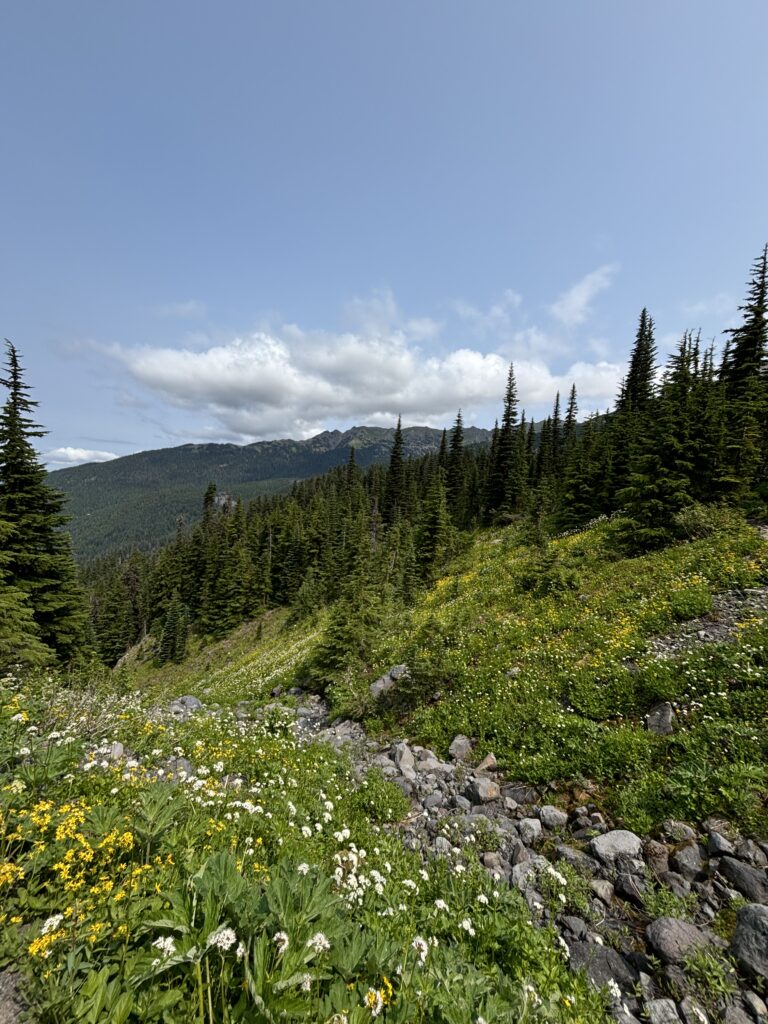24 Hours of Abalone
Hi all! I’m back with some exciting new updates. The primary research project I am working on this summer is abalone restoration with a focus on abalone outplant density dispersal and predation. Larkin, Ana, Ayden, and I are working with Josh Bouma at the Puget Sound Restoration Fund on Bainbridge Island near Seattle, WA. Josh has given us 600 abalone to outplant further North near Shannon Point Marine Center. We are out-planting 527 one year old abalone in 6 PVC tubes with varying densities: 37 count, 75 count, and 150 count. Our pinto abalone also known as Haliotis kamtschatkana are native to WA and endangered. They are a type of sea snail that can grow up to 6.5 inches in length. An outplant site was chosen to give the abalone the highest chance of survival: rocky reef habitat, about 30 ft deep, with significant encrusting coralline algae. The goal was to have two divers go down every hour on the hour for 24 hours to count the number of abalone in each tube as well as identifying any abalone outside the tube.
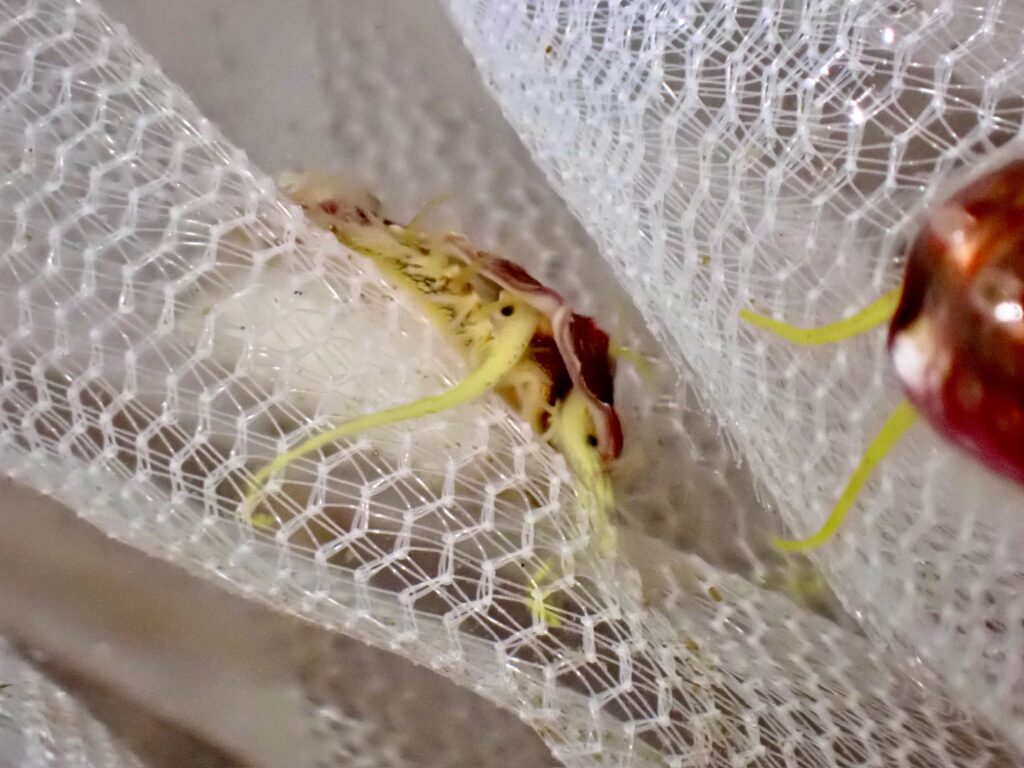
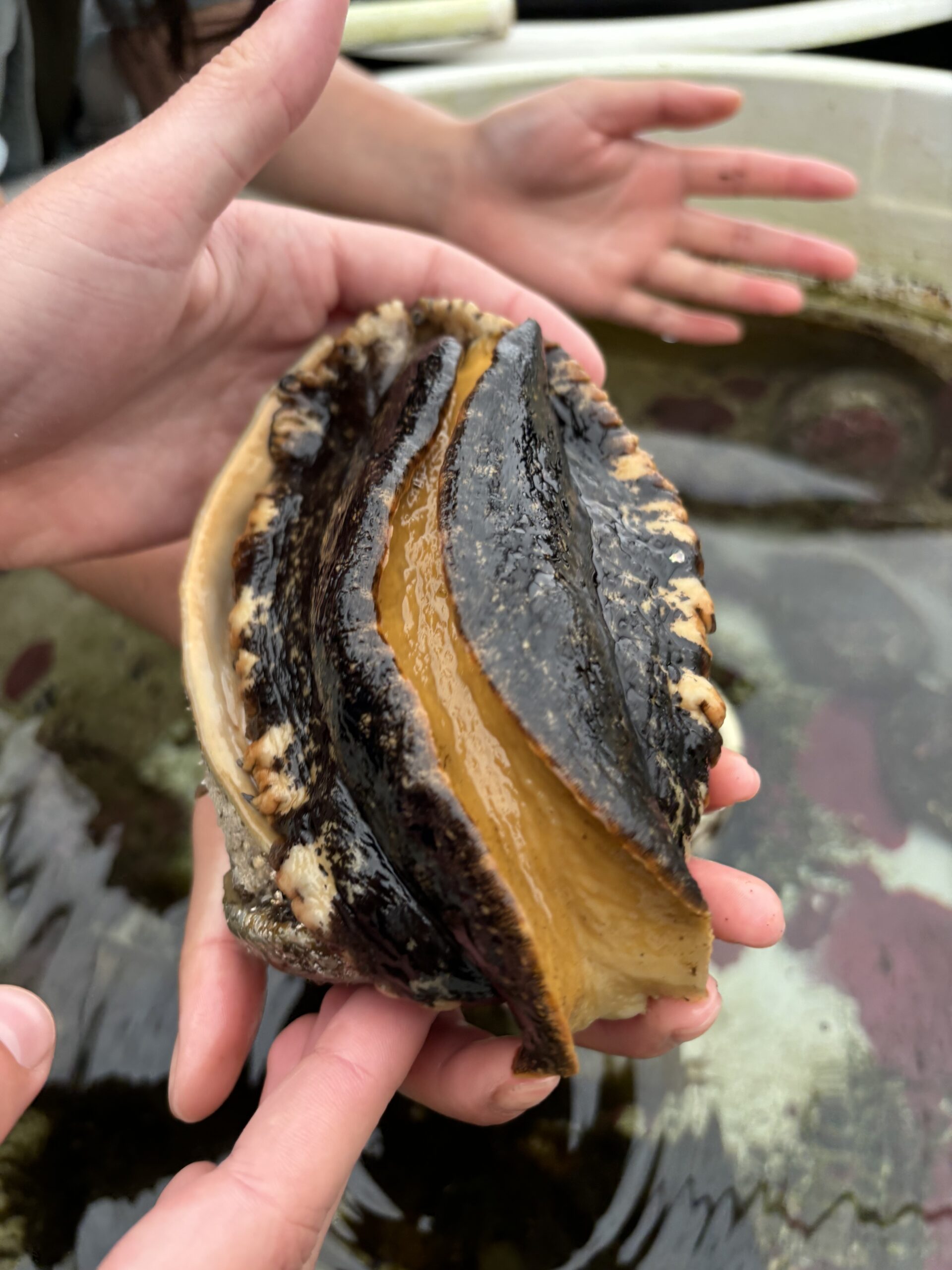
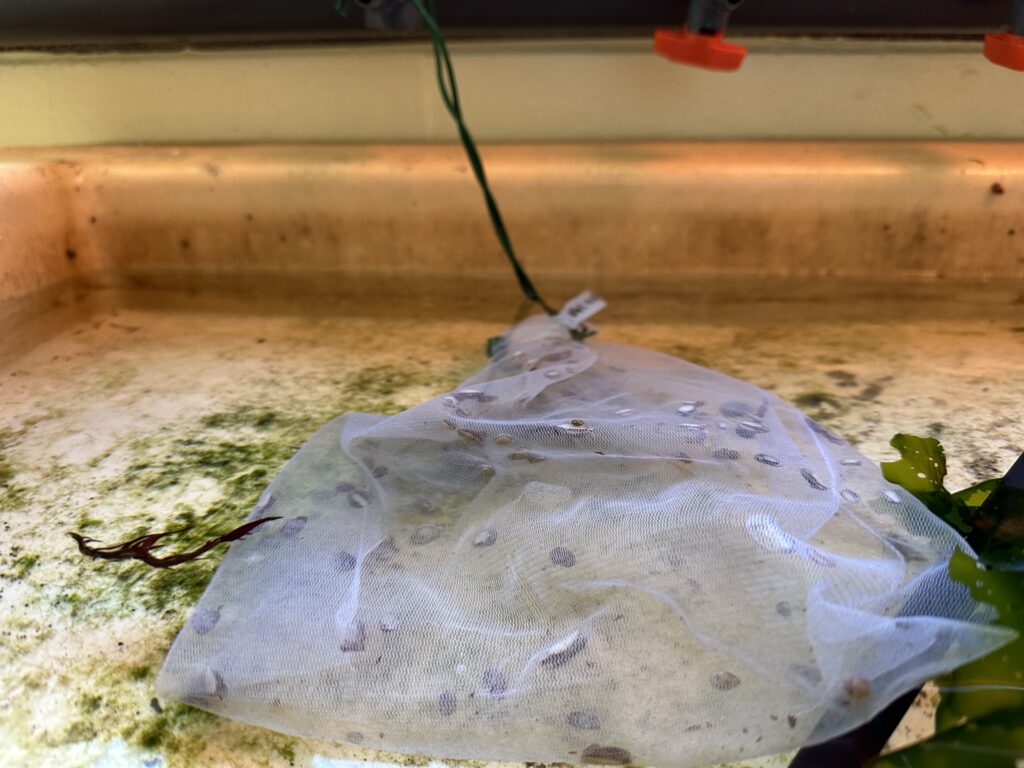
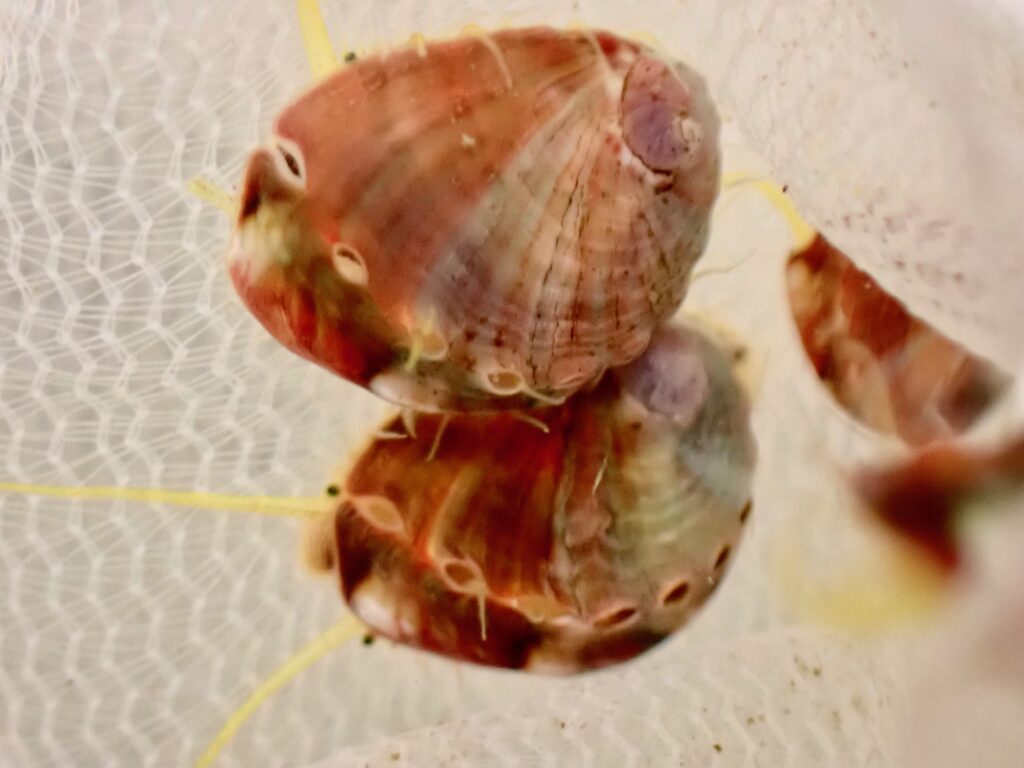
July 11th, 2024 – In preparation for our night abalone data collection dives, our scientific dive class did a 3 am night dive at our abalone outplant site. The dive had to be at 3 am because the currents were above 0.5 knots at every other time while the sun was down. This meant a very early wakeup and a cold entry and exit. Although, we did witness a beautiful sunrise on our drive back to the marina and had a filling breakfast in town after rinsing gear!

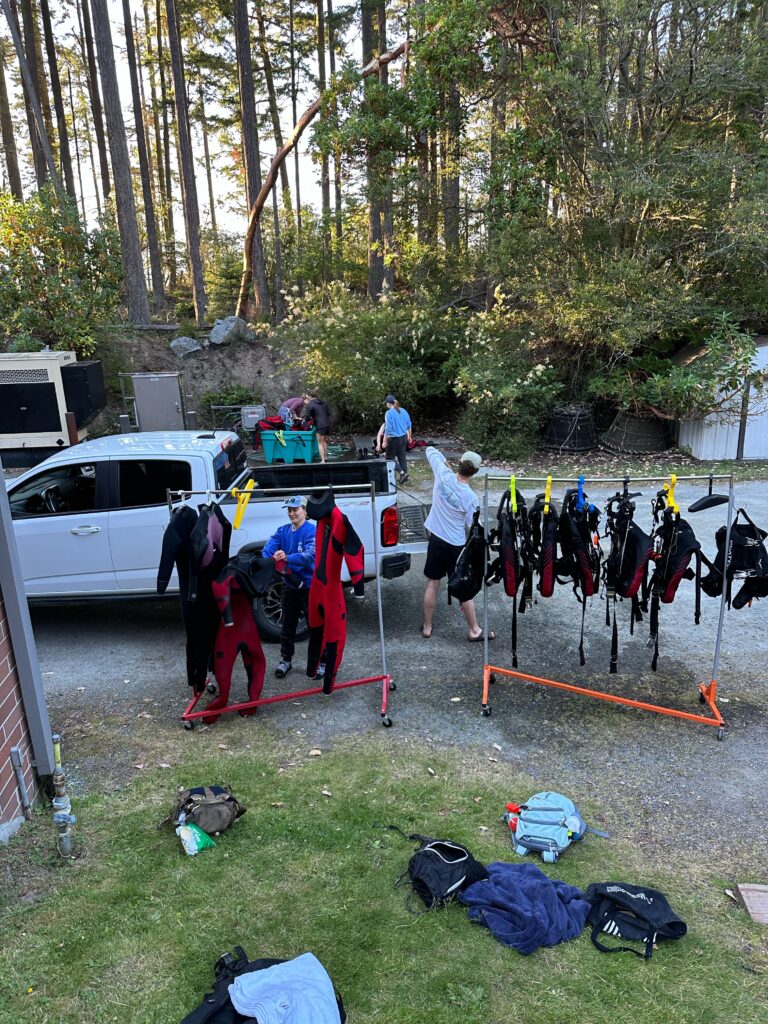
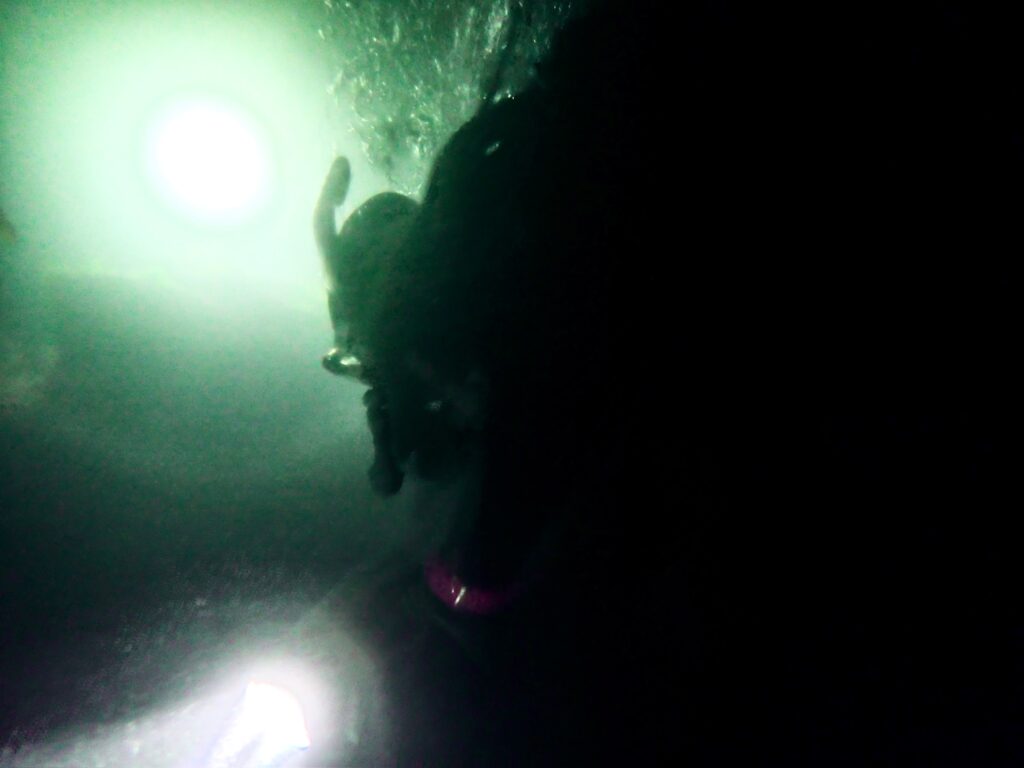
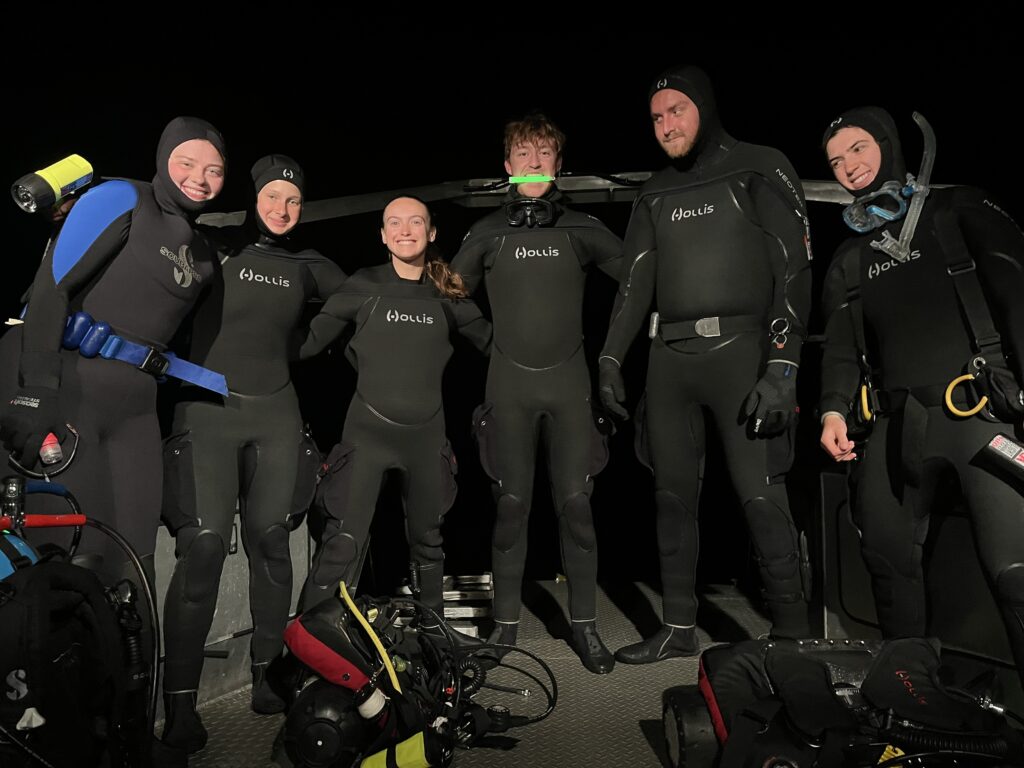
July 12th, 2024 – Derek, Larkin, Ana, Ayden, and I drove to the Puget Sound Restoration Fund to meet Josh in person and collect our baby abalone! We got to see the abalone hatchery and growth process! Once collected, the abalone must be tagged with very small, numbered bee tags and out-planted within ~48 hours. Eight people spent 7 hours tagging 527 abalone on July 14th. It was a very tedious process including glueing the 2 mm tags to the 5 mm dancing abalone and measuring their shell size.
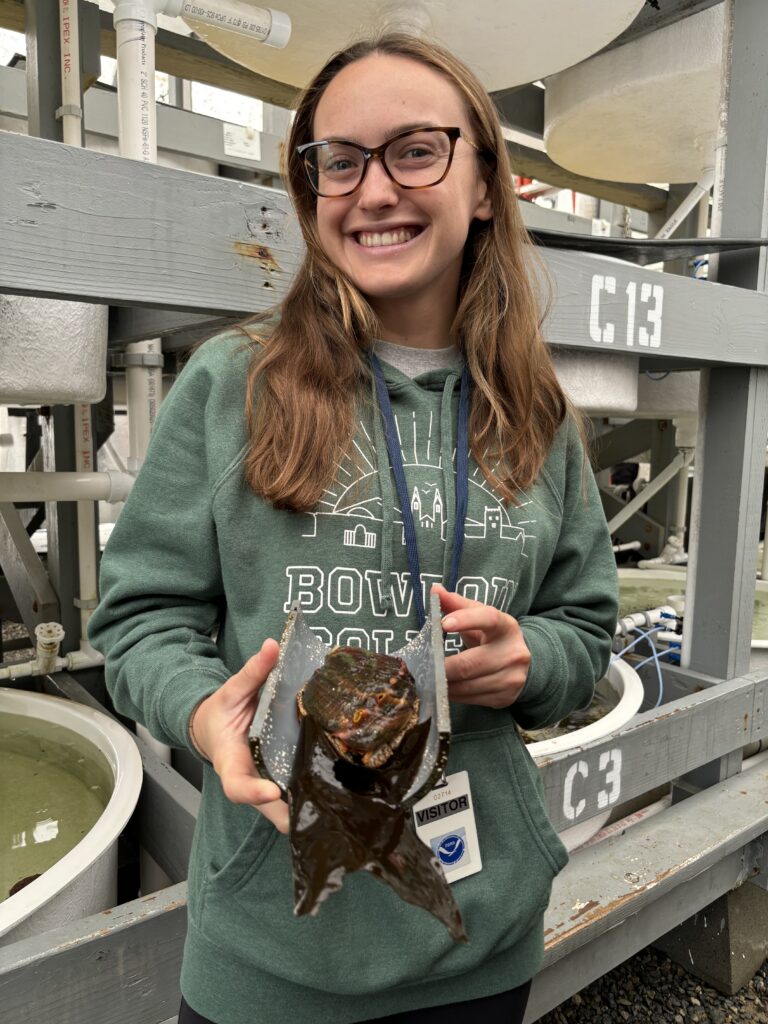


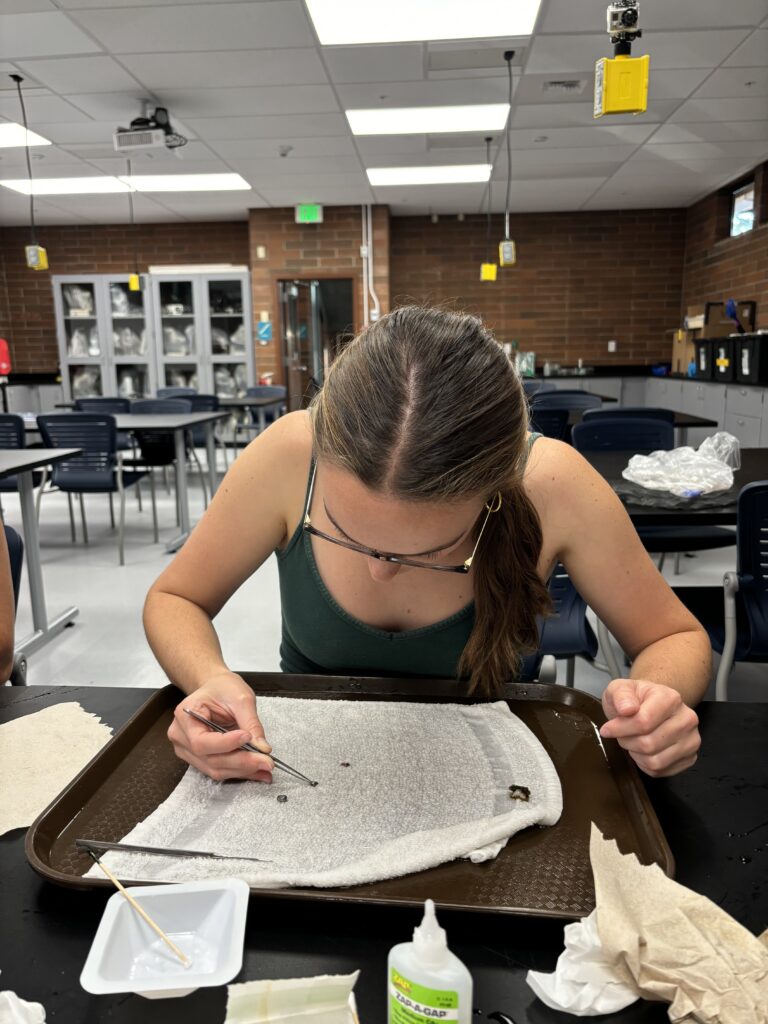
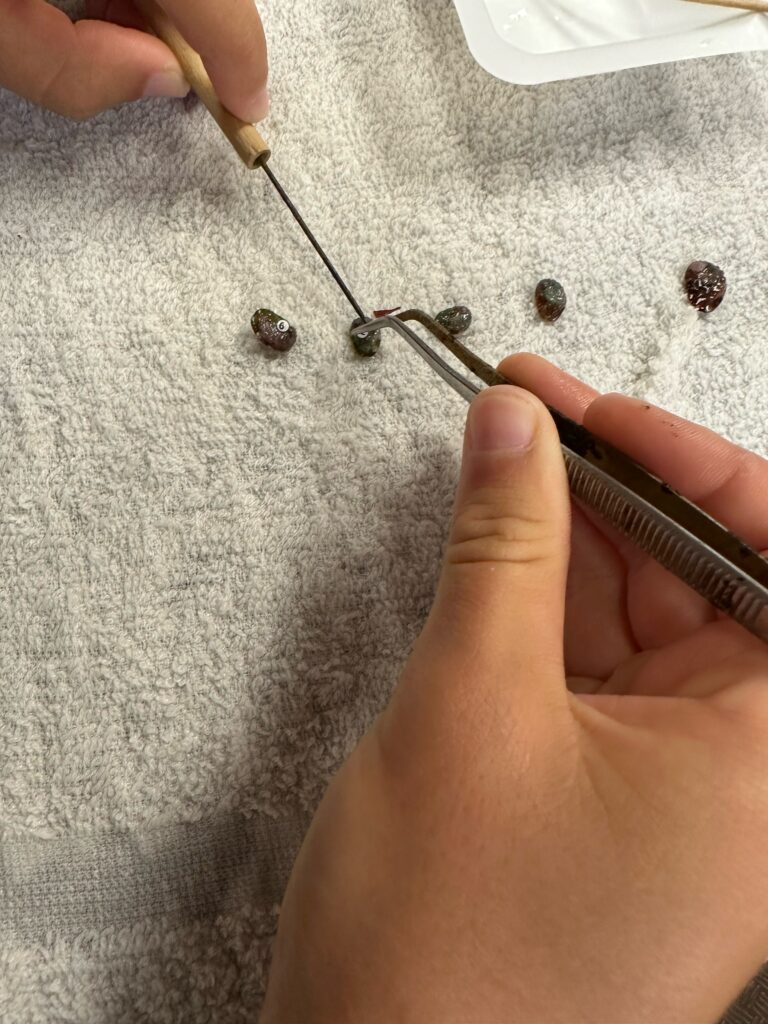
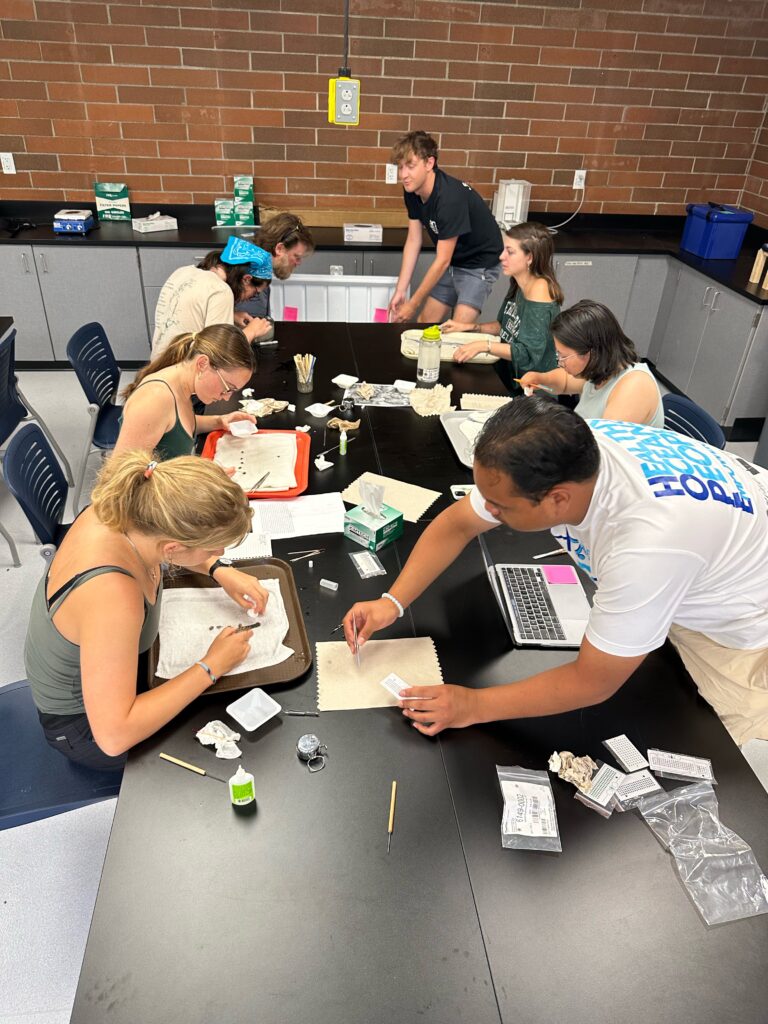
July 15th, 2024 – The big day!! Derek, Nate, Larkin, Ana, Ayden, and I have spent the last few weeks preparing for our 24-hour adventure. Preparation included picking our dive site, scouting out our tube placement, finalizing our methods, retrieving and tagging the abalone, current monitoring, and meal prep. At 4:30 am, we went down to the lab to pick up our abalone and we headed to Skyline Marina to load the boat. We arrived at the dive site at about 5:30 to find the opposite conditions the forecast predicted: dense fog, moderate breeze, and decent current. We were supposed to begin our tube deployment at 6 am but held off due to conditions until 7:30 am. Then, we were off! Our first abalone count started at 8:45 am. Each hour ~5 to 15 abalone left the tubes with the data plateauing around early evening. We had 9 divers complete these dives, but it was primarily 4 divers: Larkin, Ana, Ayden, and me. We on average did 2 dives followed by 4 hours off, give or take an hour. We also observed MANY predation events on our precious abalone. Amphissa were the primary predator we noticed. Amphissa is a genus of small sea snails. It’s interesting that the Amphissa eat the baby pinto abalone (also a sea snail). It was so cool to catch some of these predation event on camera because Josh mentioned they at the Puget Sound Restoration Fund have never been able to capture one. At around 1 am, the currents started picking up, everyone was exhausted, and we were not seeing major changes in the data. It was decided that we would come back at 10 am on July 16th to continue counting. We then did 1-2 dives every day until all the abalone had left the tubes. We had been up for 22 hours straight and then were back at it less than 7 hours later! We had a sick set up with two research vessels anchored and tied together, hammocks, a ton of snacks, and people visiting us throughout the day with reinforcements. Our dive site was so beautiful, so we never got sick of it even 48 dives later! The dives averaged around 15 minutes at ~20 ft. It was so rewarding to help complete this diving research project start to finish, and it generated a whole lot of memories.
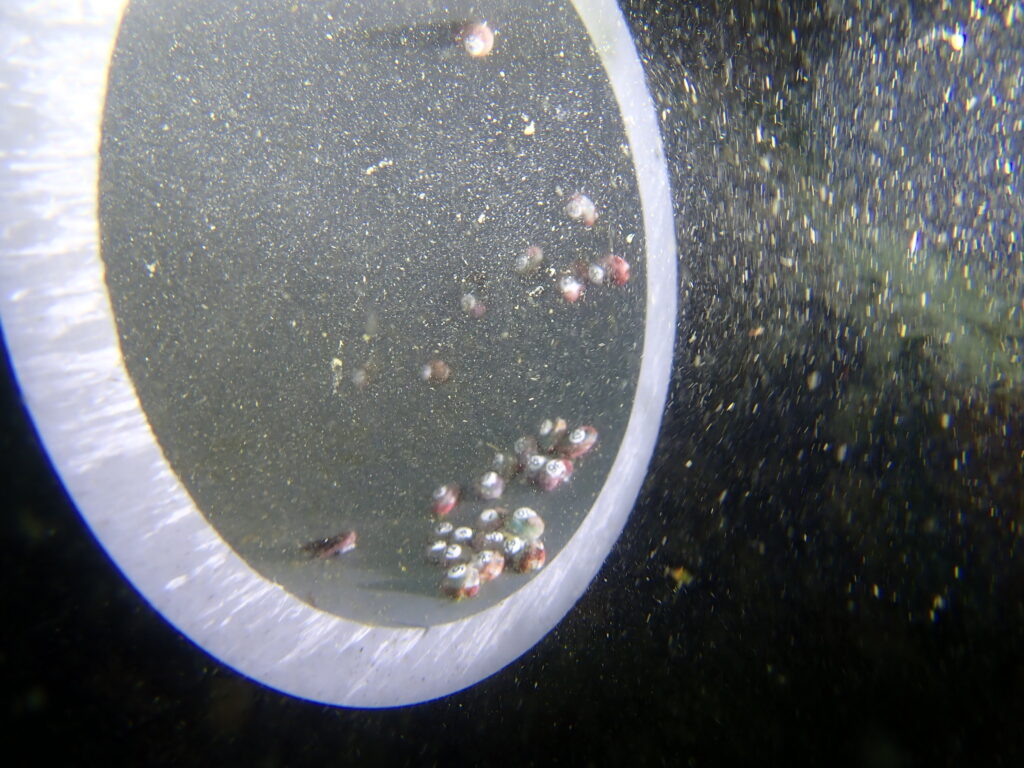

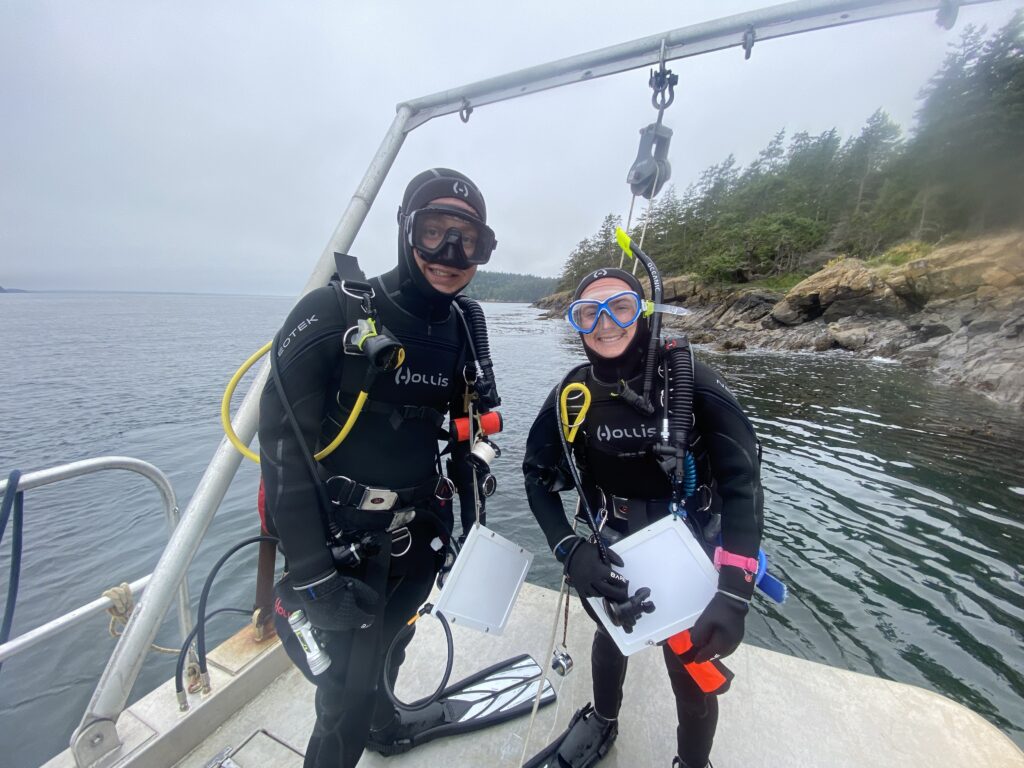
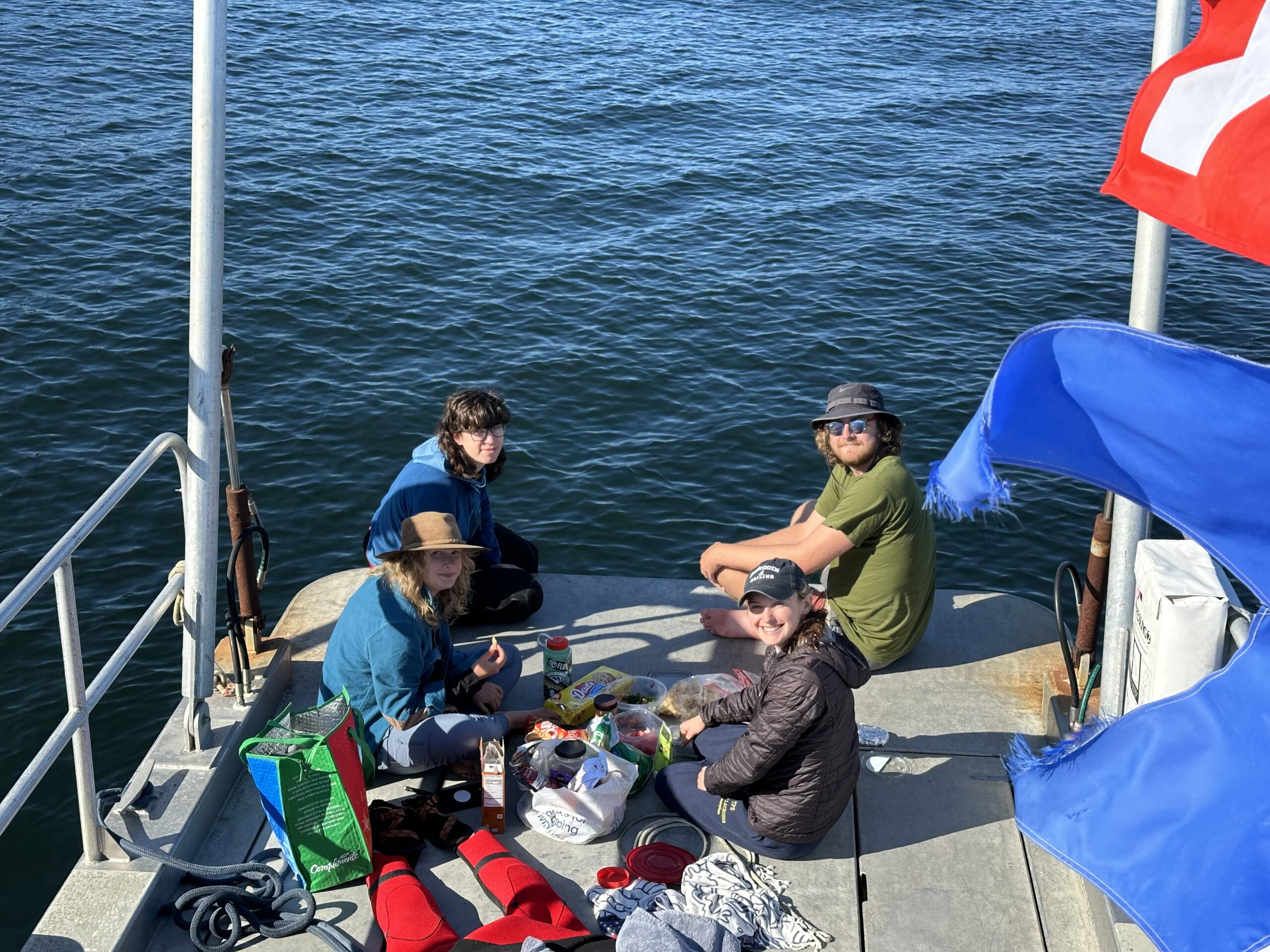
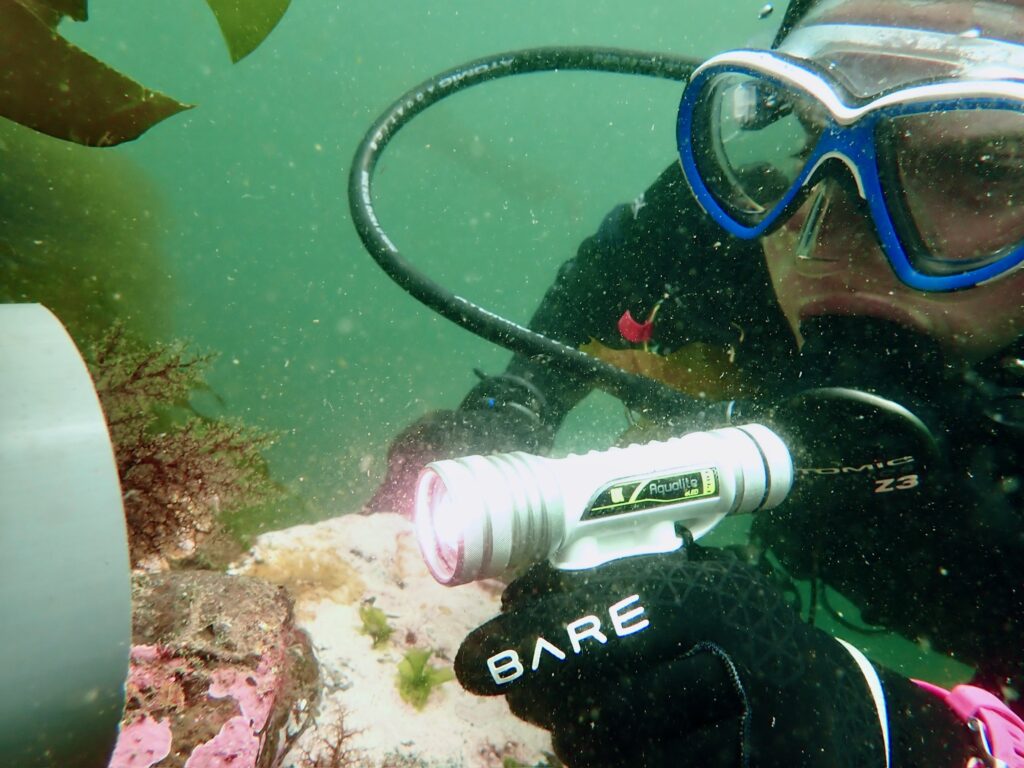
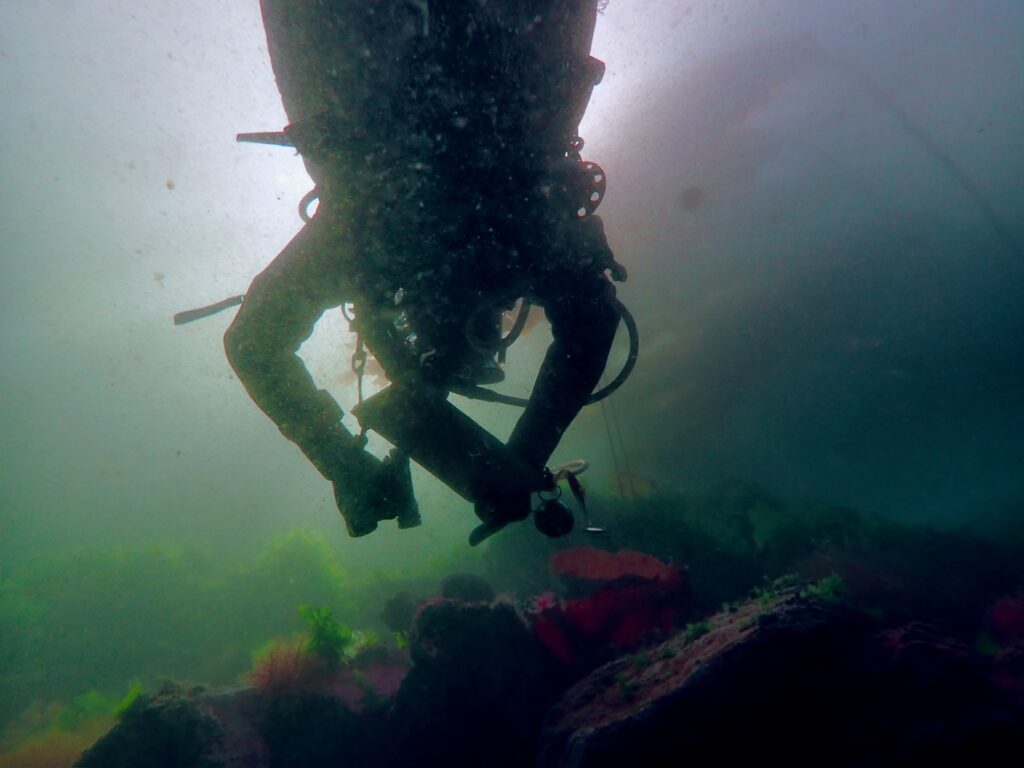
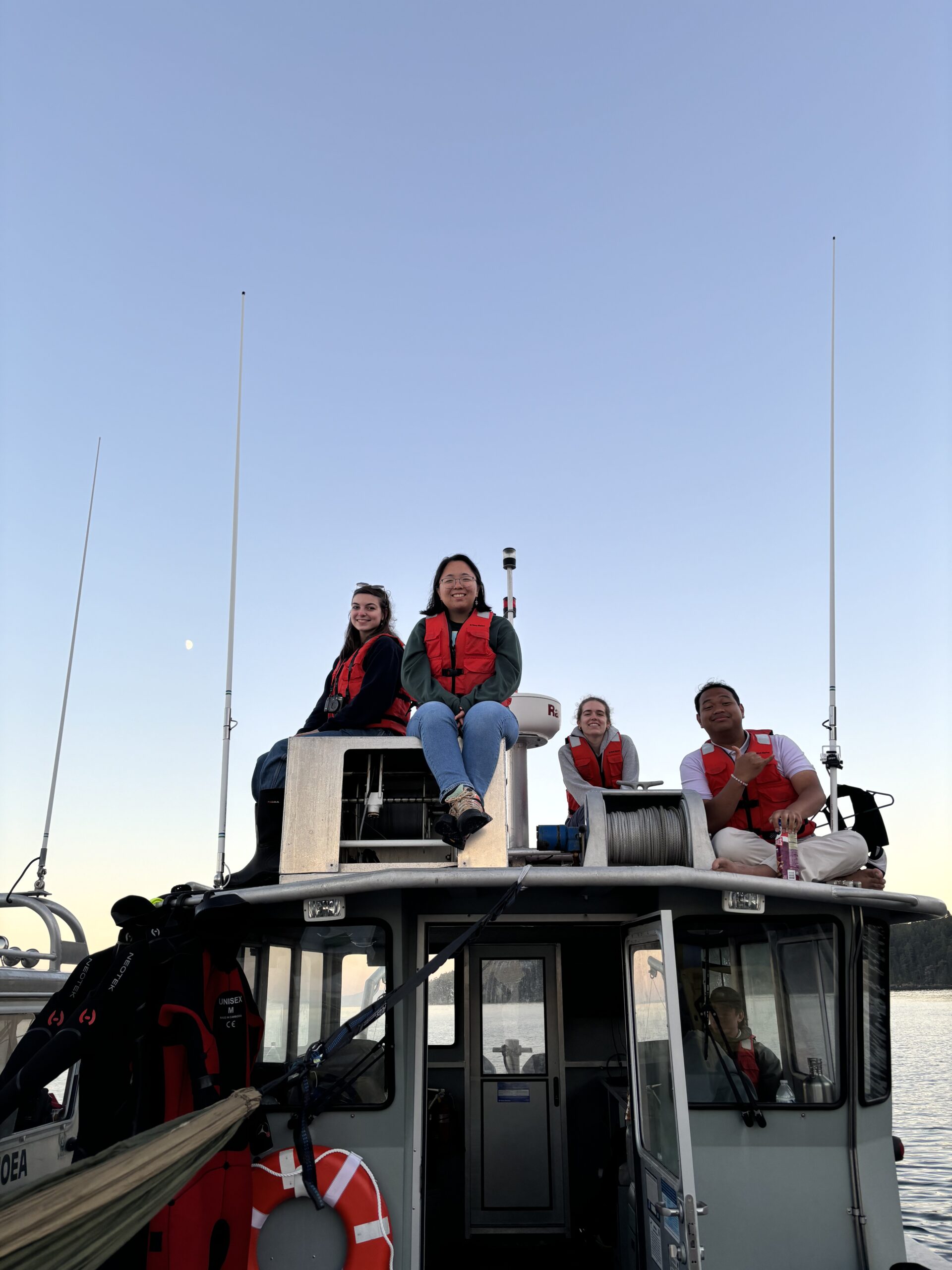
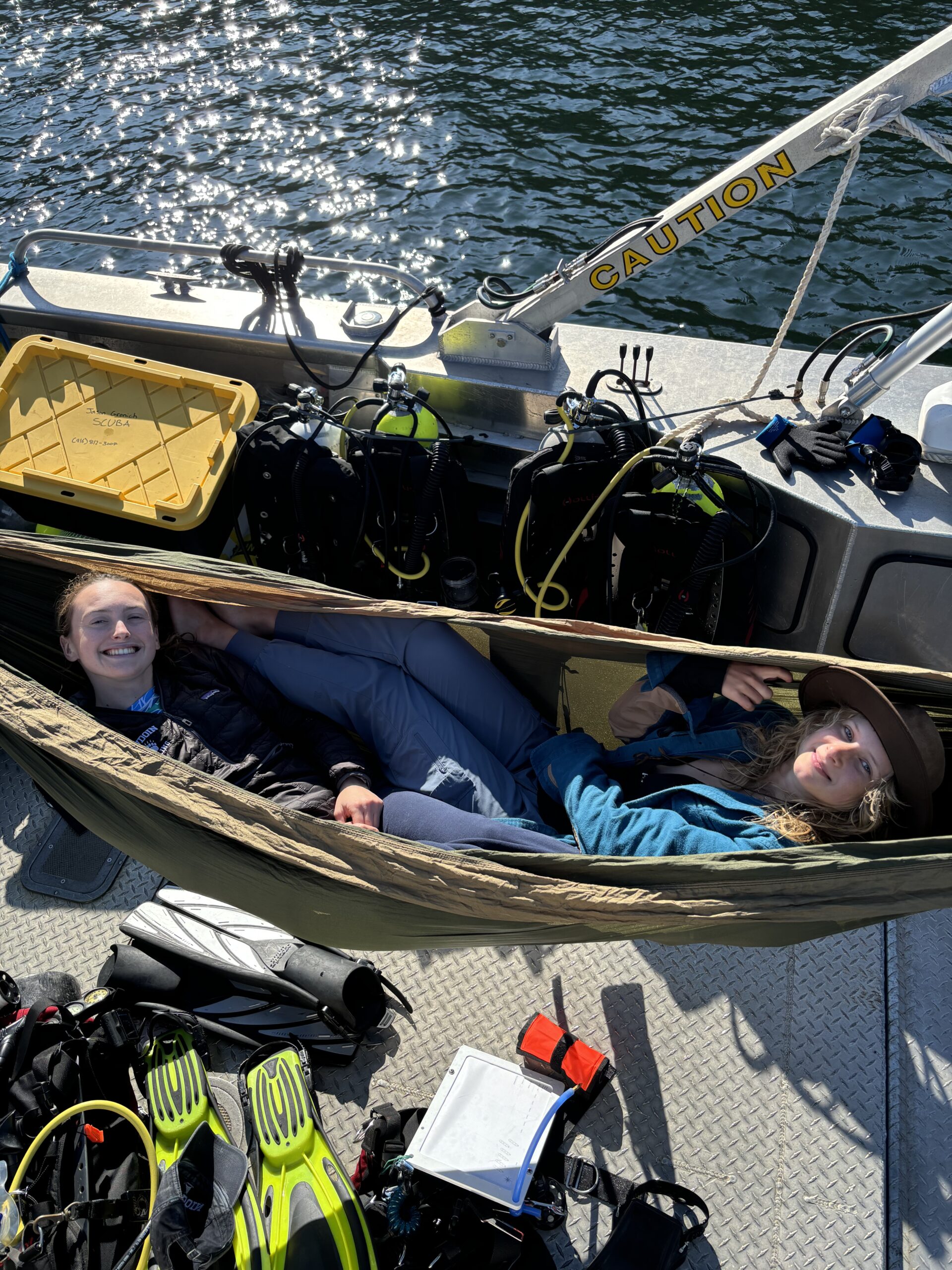

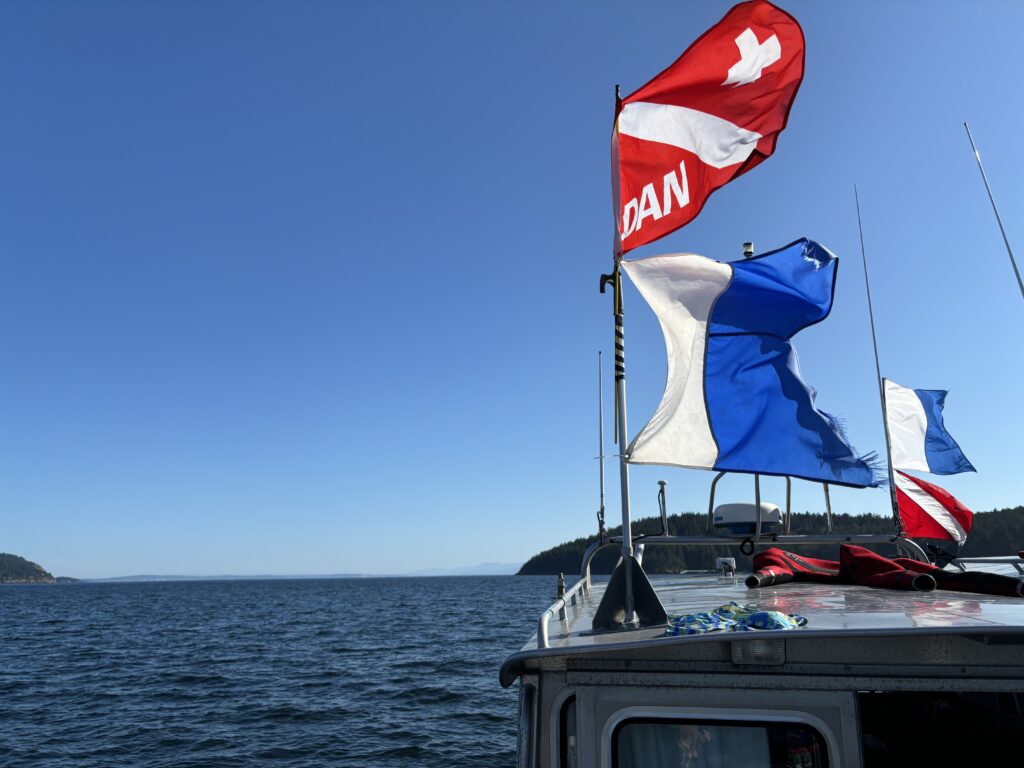
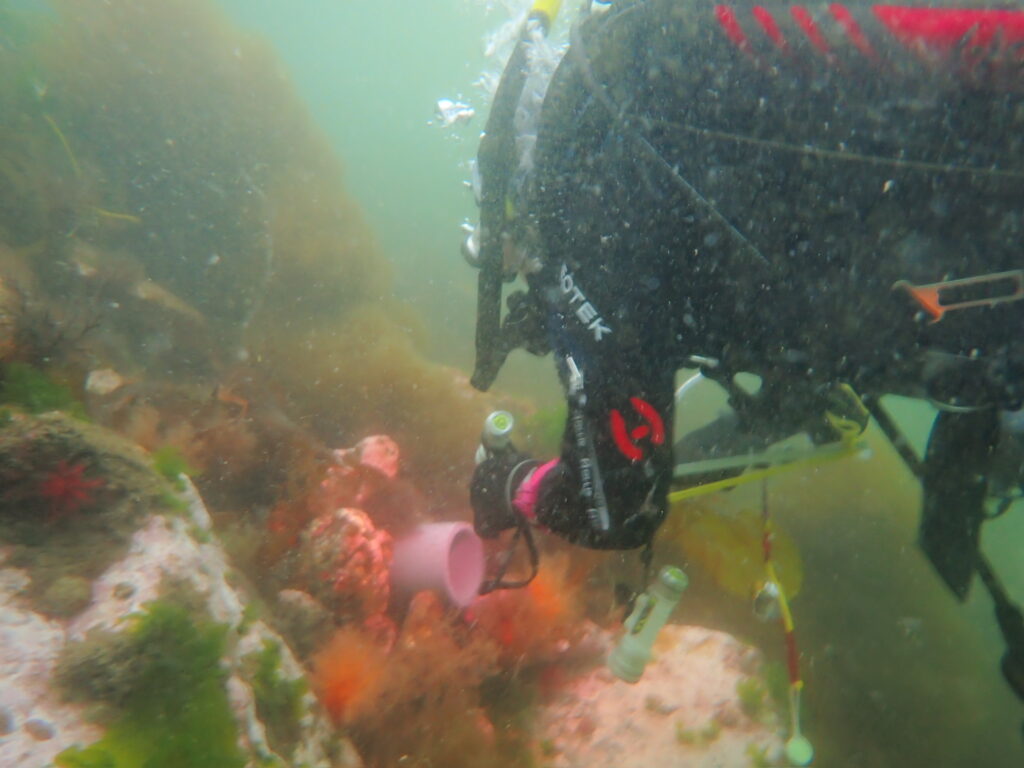
Seapens & Friends
July 2nd, 2024 – Back tracking a little, in early July our scientific dive class started collecting data for a seapen population density project. Katie (WWU student) was spearheading this project as an undergraduate capstone project. We mapped out four 10 by 10 meter squares ~ 2 meters apart with meter tapes in a random location in Burrows Bay, Anacortes, WA. Our goal was to count the total number of juveniles and adults in each quadrat giving us a quantitative population density estimate. So far, we have done 5 dives at our seapen site. This site has proven to be a different location to conduct research with significant current in an unprotected area of Burrows Bay. Our data was unusable on two occasions, but we believe we have sufficient data now! We also did a seapen night dive in which we were on the hunt for phosphorescent seapens. We did not find any, but we did experience the most bioluminescence I have ever seen. Ayden and I spent a good 7 minutes waving in each other’s faces to produce it. Unfortunately, bioluminescence doesn’t come out on camera, but it looked like a star rave.
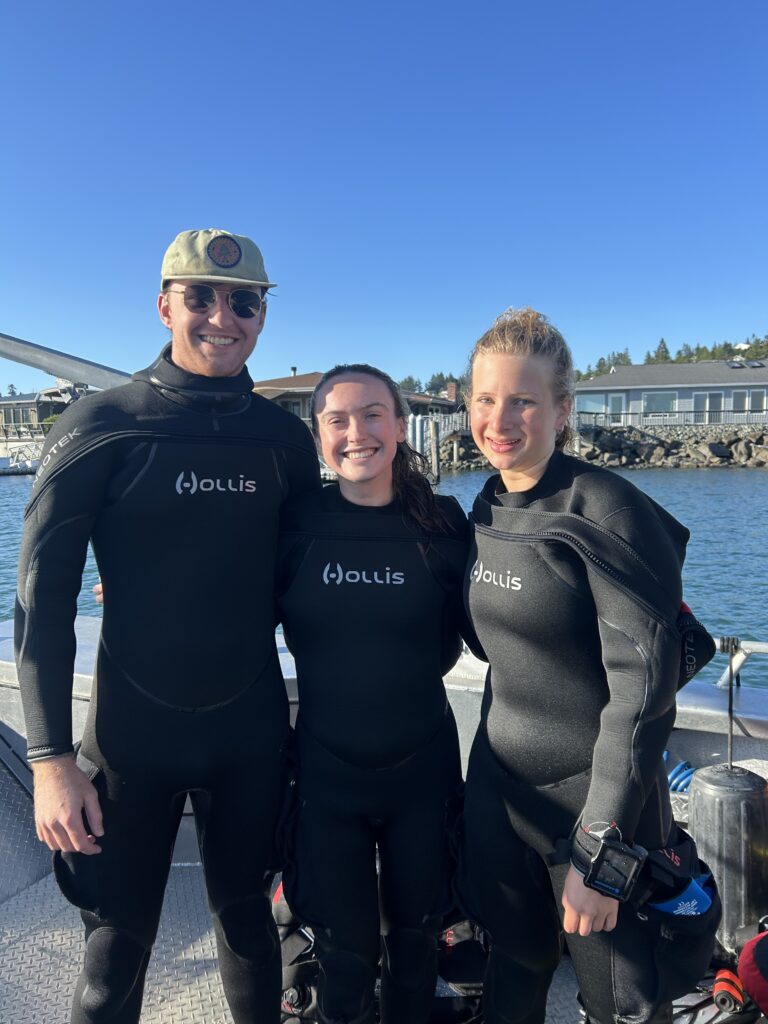
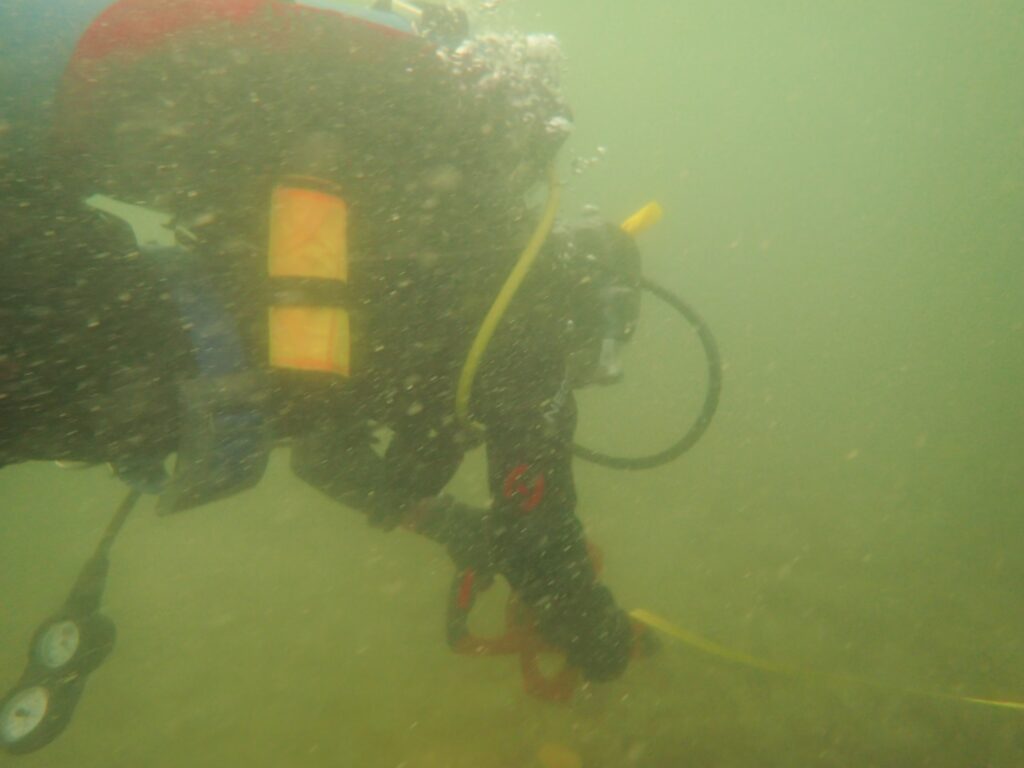

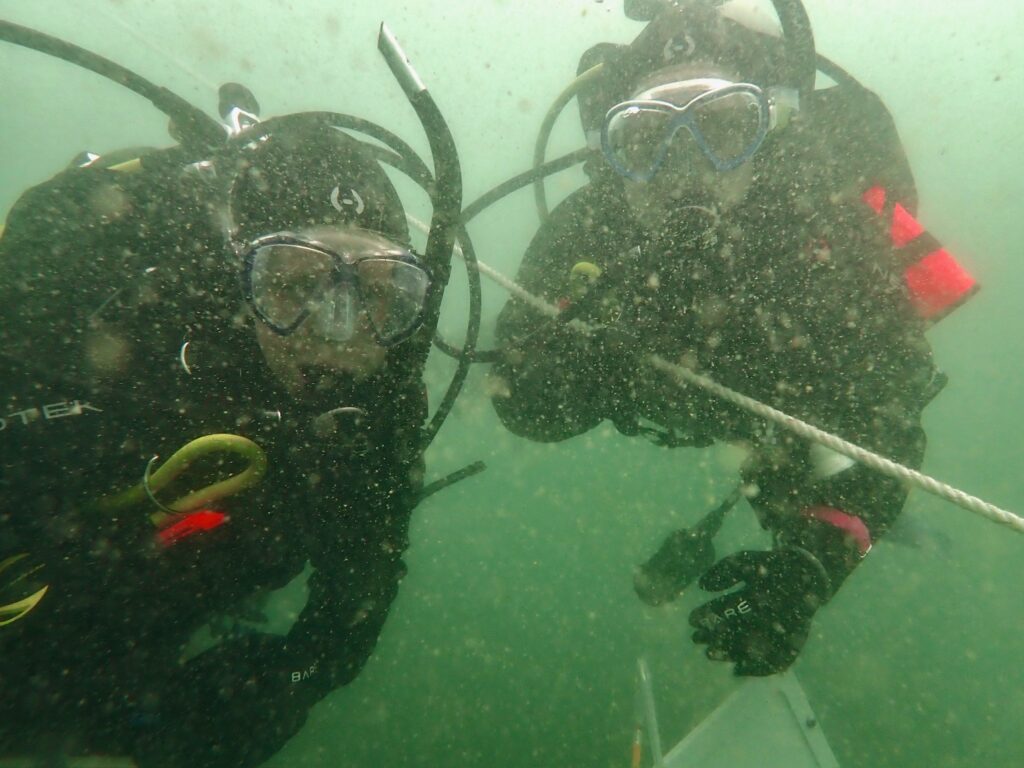
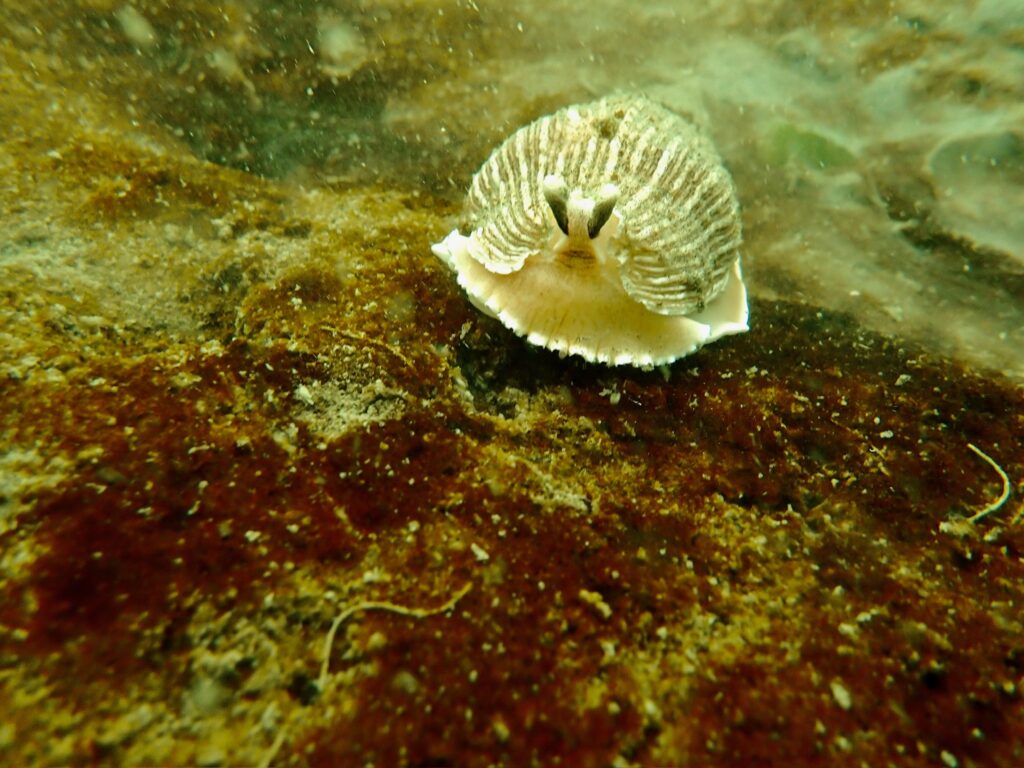
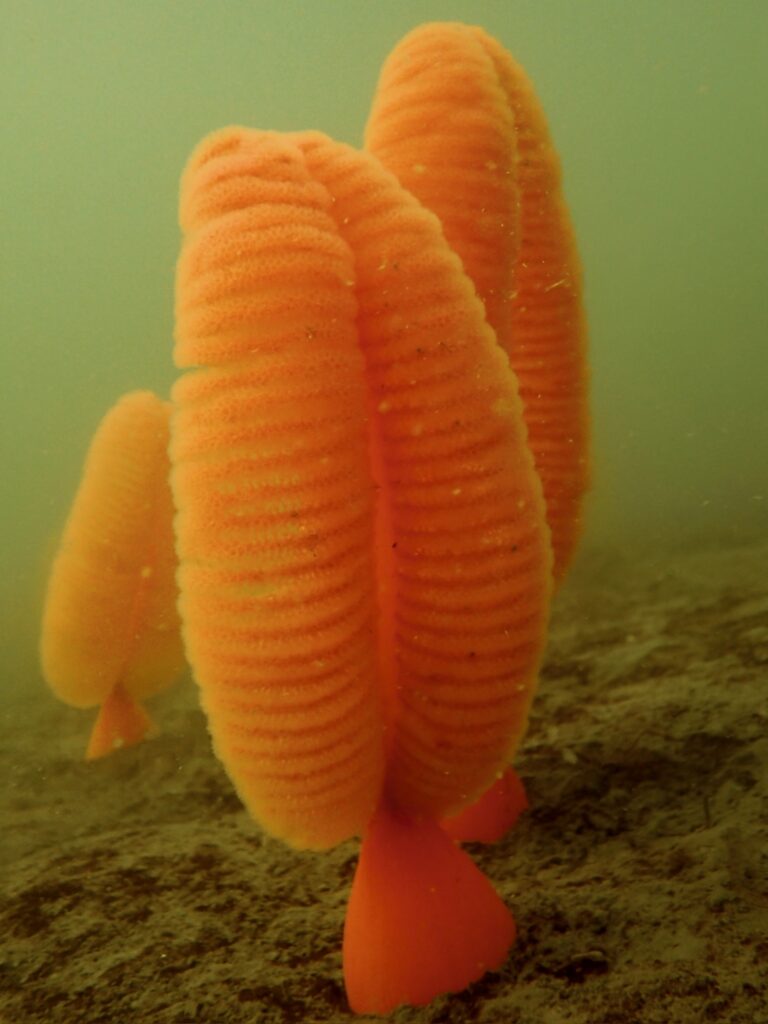
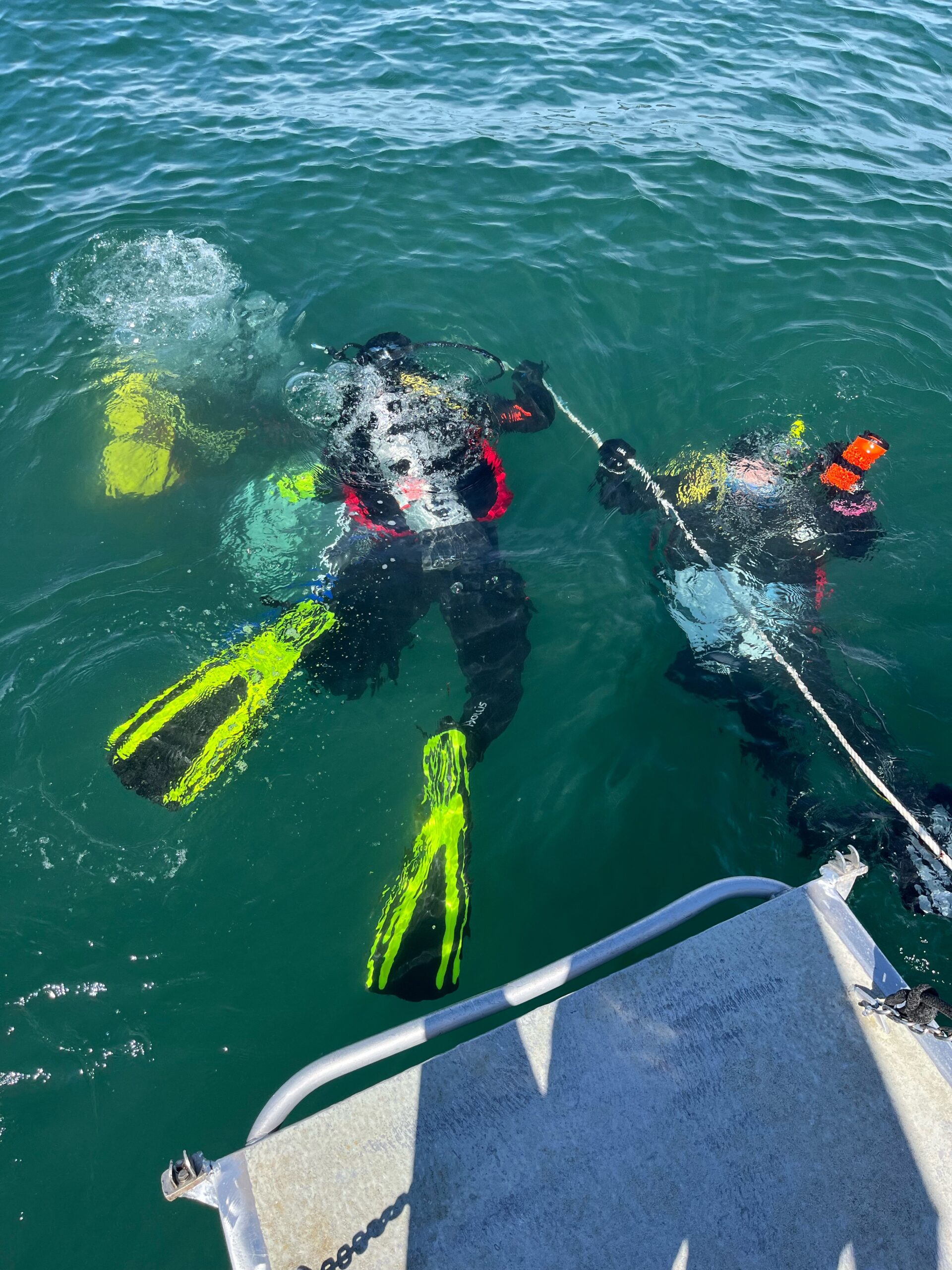
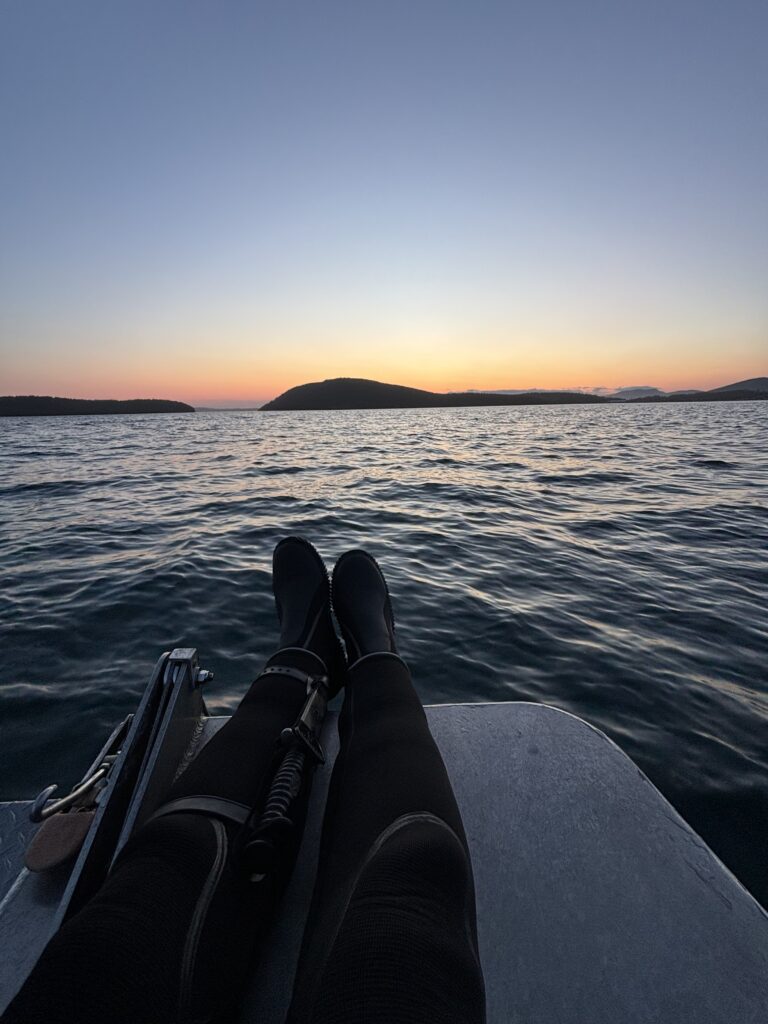
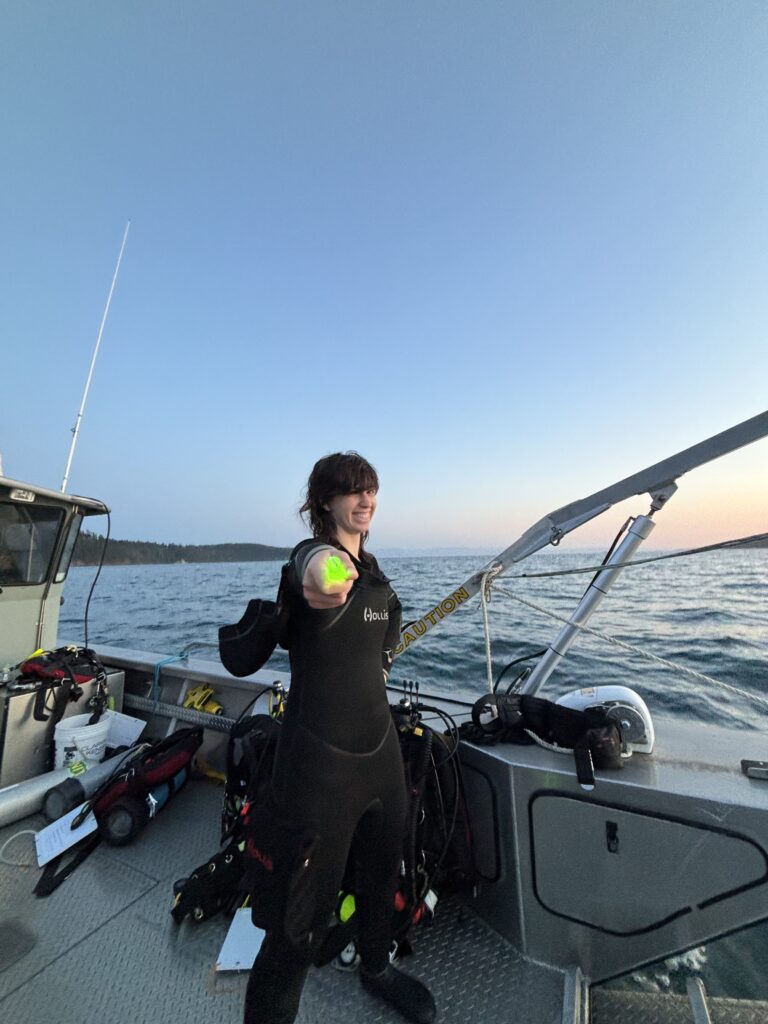

July 25th, 2024 – In addition to the checkout dives, night dives, and data collection dives with habitat structure and quantification, there is a deep dive requirement for the AAUS scientific diving certification. We have done two deep dives so far: one at Turn Island to 60 ft and one at Sares Head to ~100 ft. Our focus was deep dive safety, nitrox mixes, and narcosis symptoms. We completed a worksheet with basic questions about our lives, pop culture, and math calculations to see if any of us experienced symptoms of narcosis at depth. Larkin and I did feel some symptoms of narcosis making us giggle but not disrupting our decision making ability.

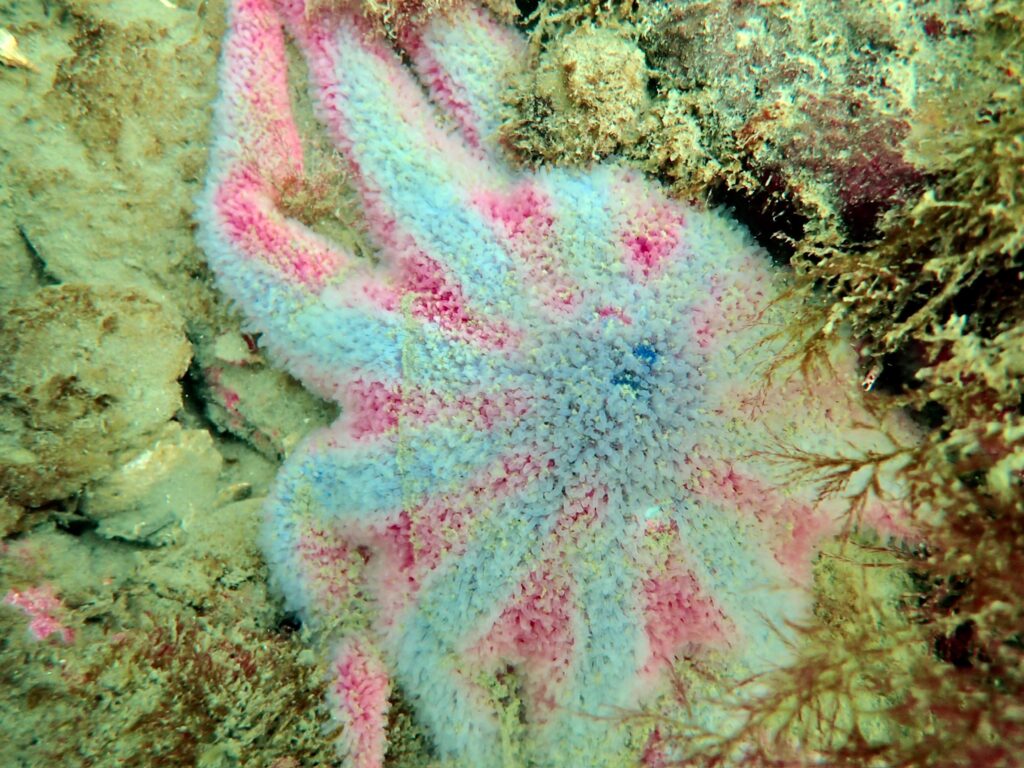
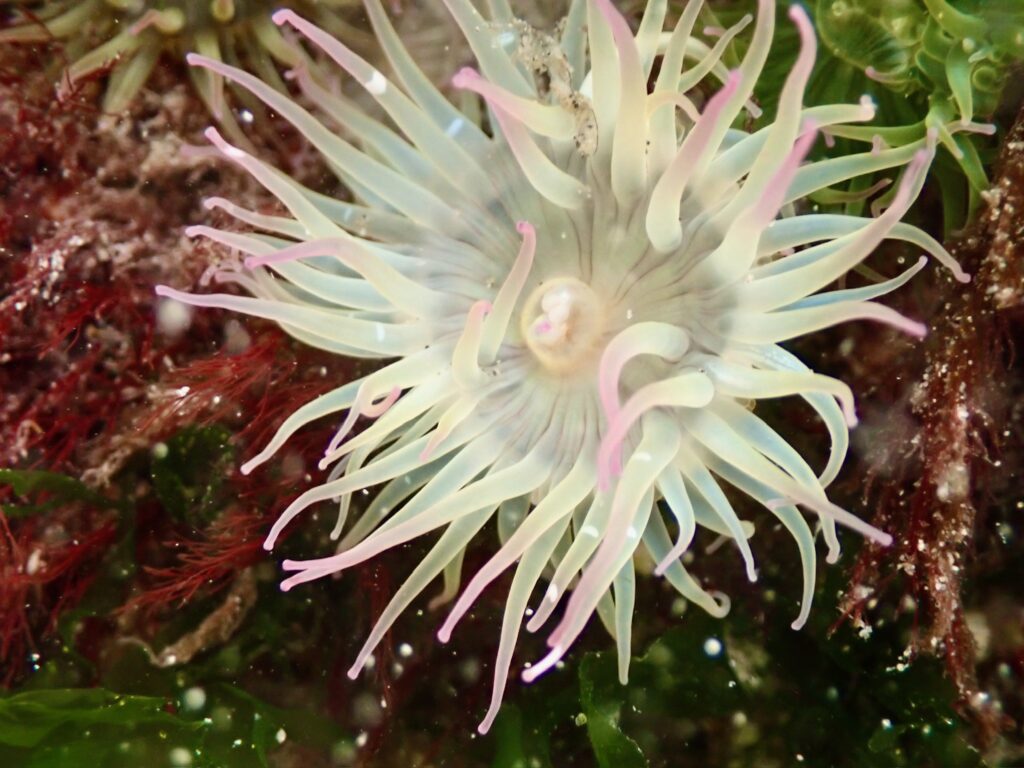
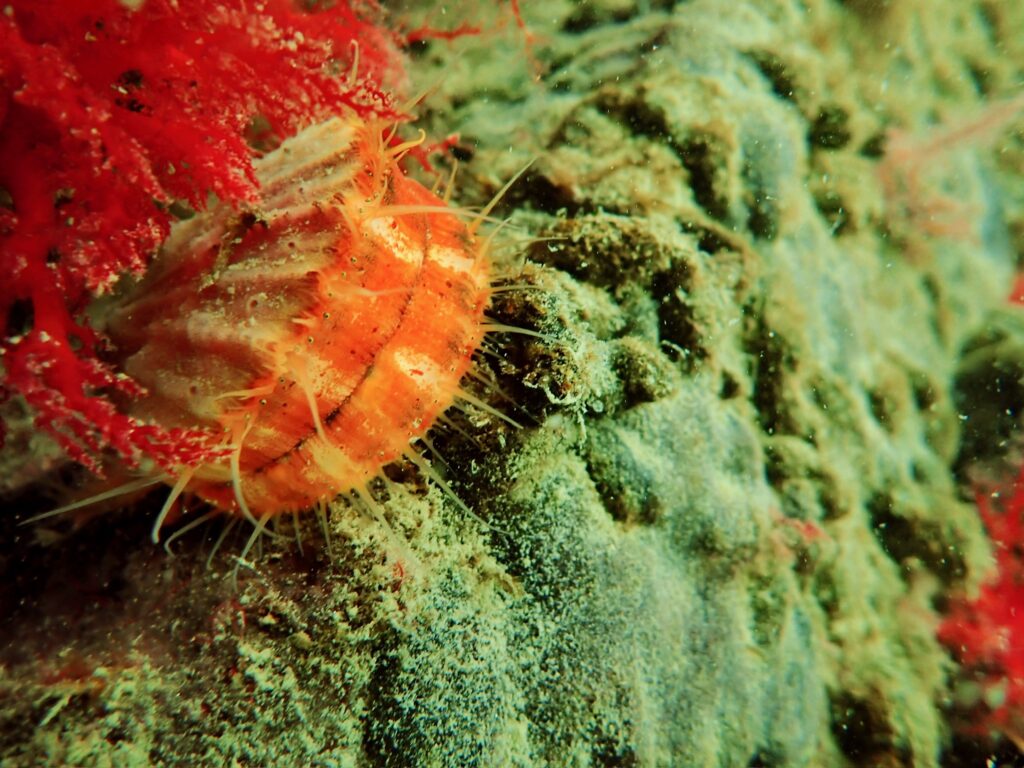
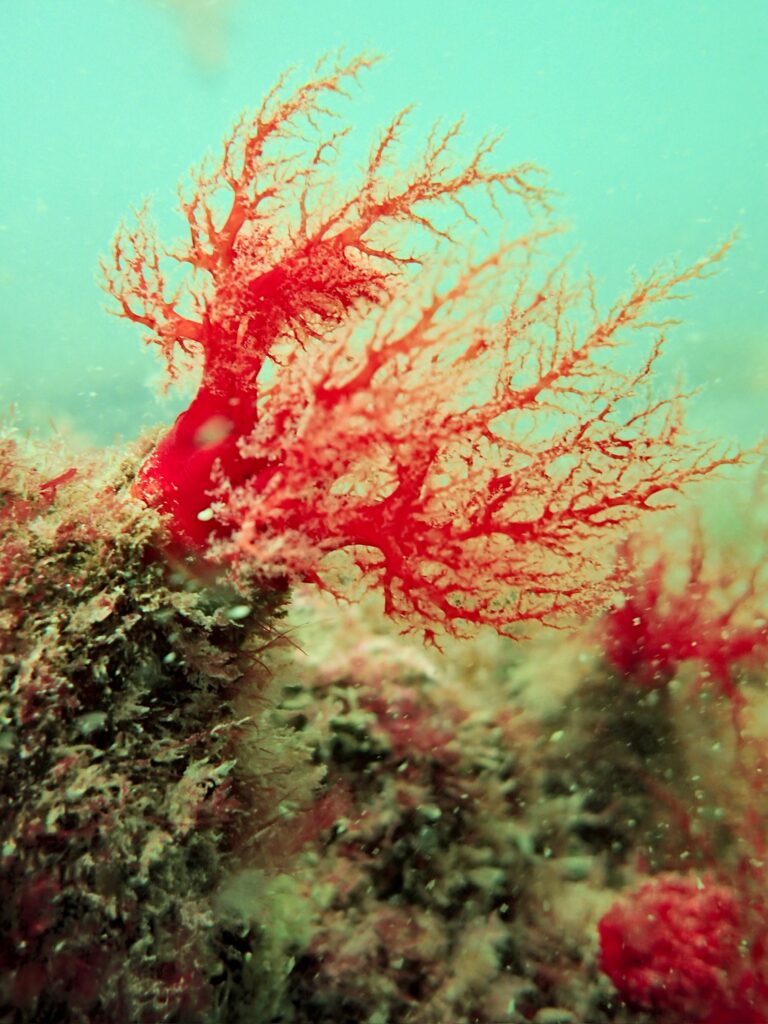
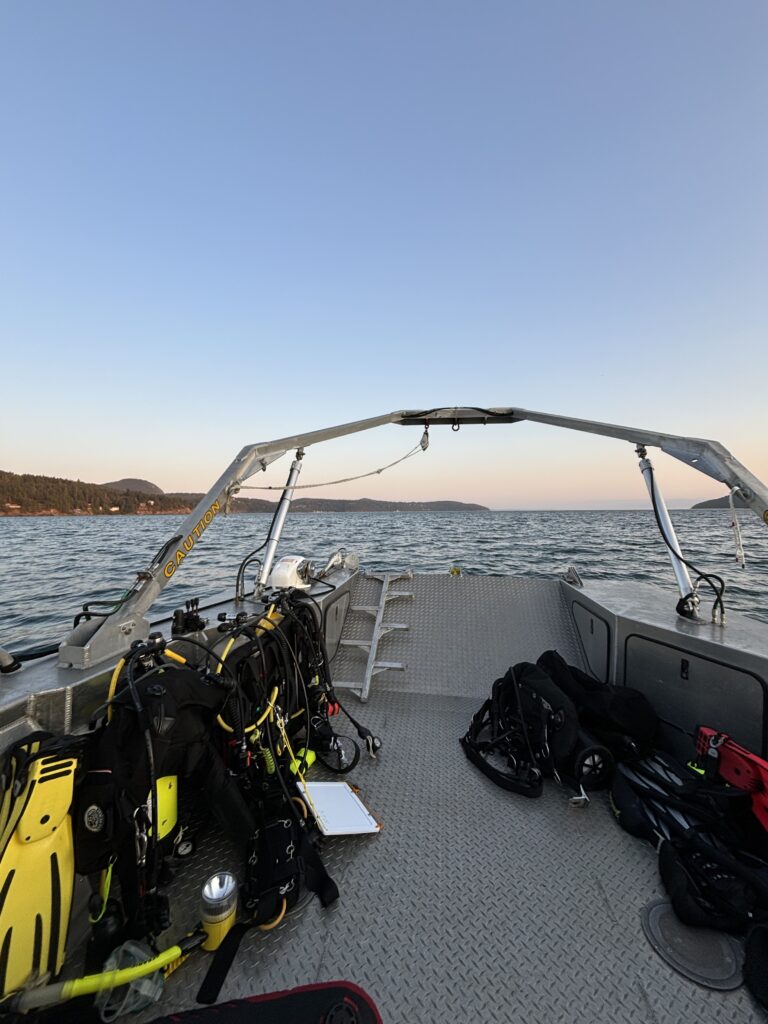
While diving has been my primary focus this summer, I have also had some amazing experiences above water. The Shannon Point in-residence summer crew (REUS, Art students, OWUSS Interns) has taken the WWU van or boat around WA to some awesome views including Deception Pass State Park, Deer Harbor on Orcas Island, Mount Erie, Guemes Island, Mount Baker, Orca watching, and Friday Harbor. Every experience was gorgeous and so memorable, I can’t pick a favorite. On June 18th, I saw a pod of orcas for the first time!!! And then we saw a lone orca from the beach only about 100 yards offshore not even a week later which was insane. We went to Deception Pass State Park the first week which was an amazing first view to see. On July 27th, we hiked the Heliotrope Ridge trail to the glacier viewpoint on Mount Baker which was arguably the most jaw droppingly beautiful hike I have ever been on. Friday Harbor was also stunning. I’m a sailor, so the gorgeous sailboats were definitely an eyecatcher for me! I’d like to give a thanks to Brian, Derek, Nate, and Brady (WWU Faculty) who have driven us countless times in the van because none of us had cars (most of us are from the East Coast).
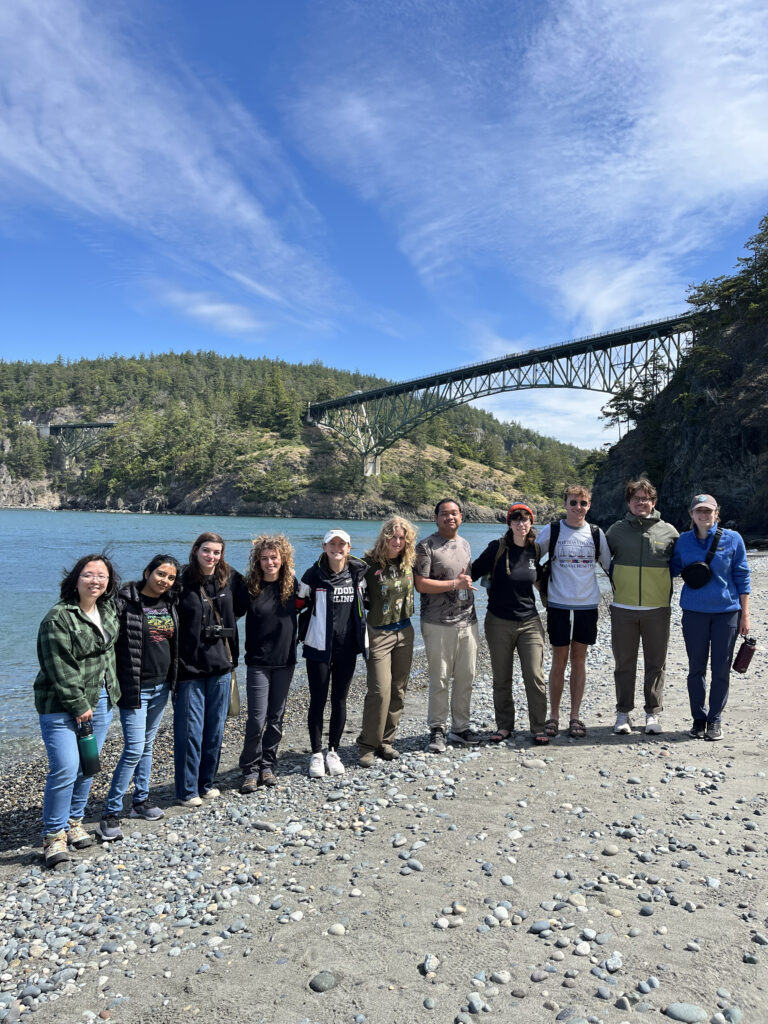
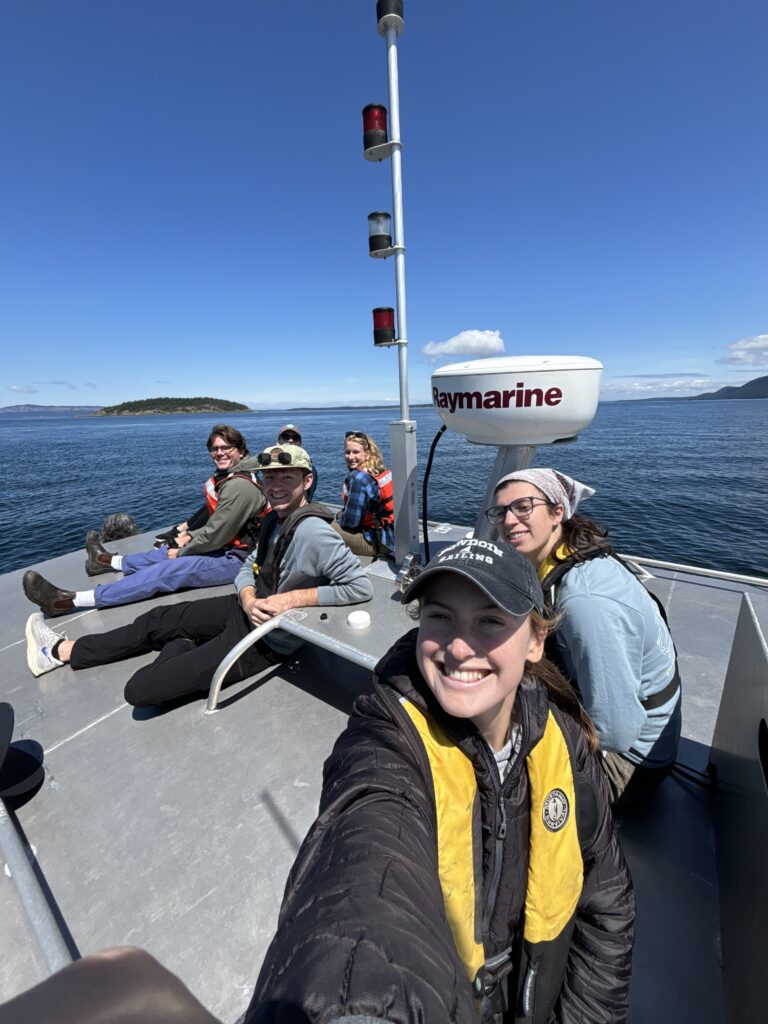
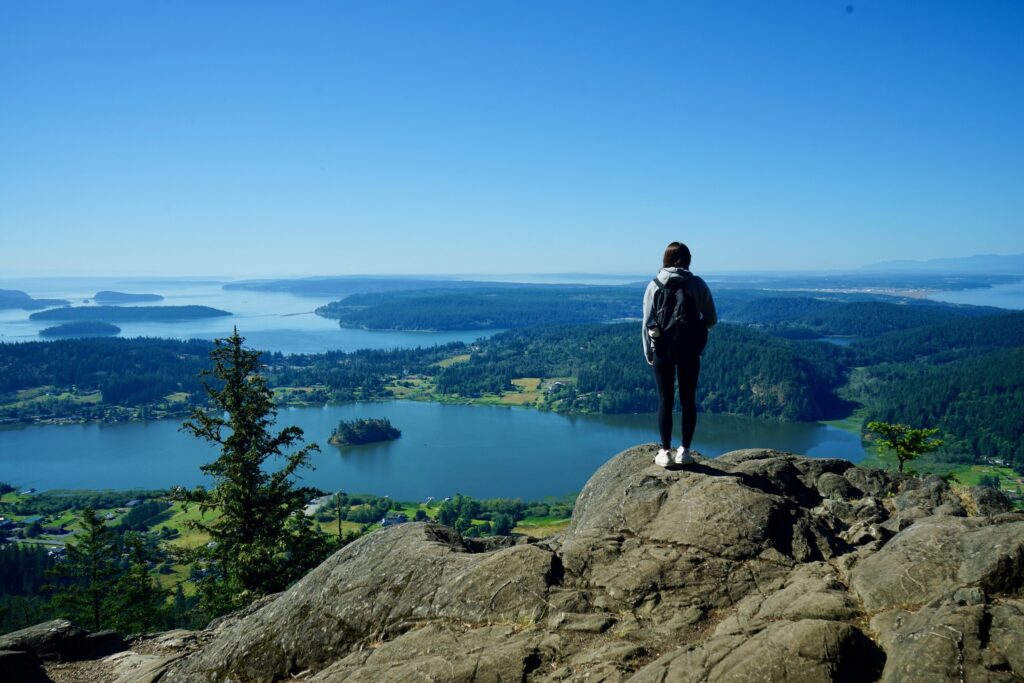
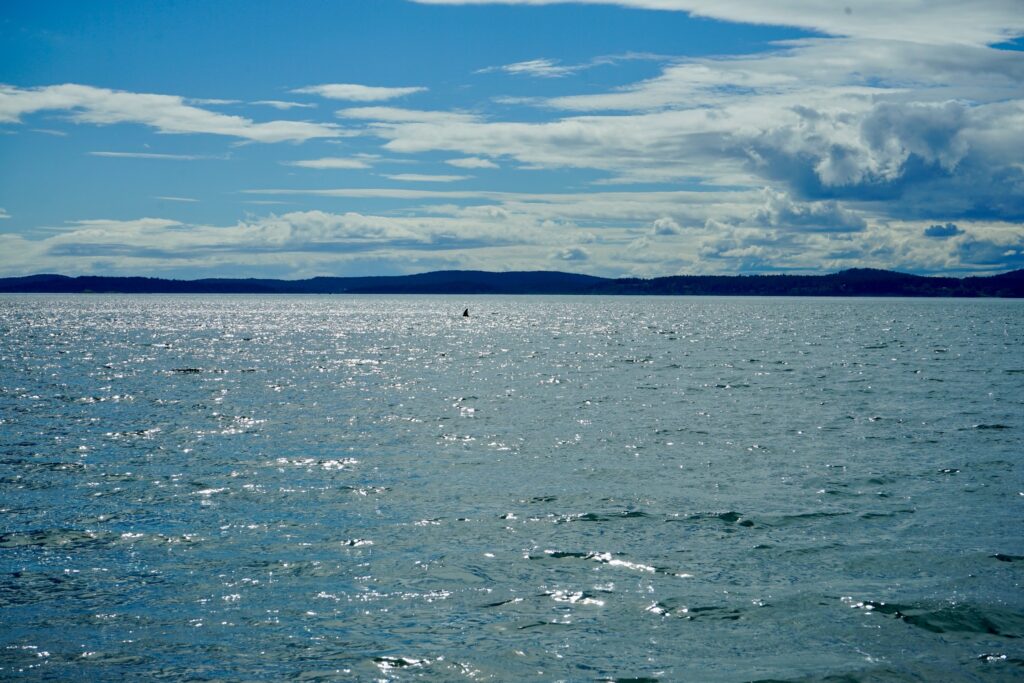
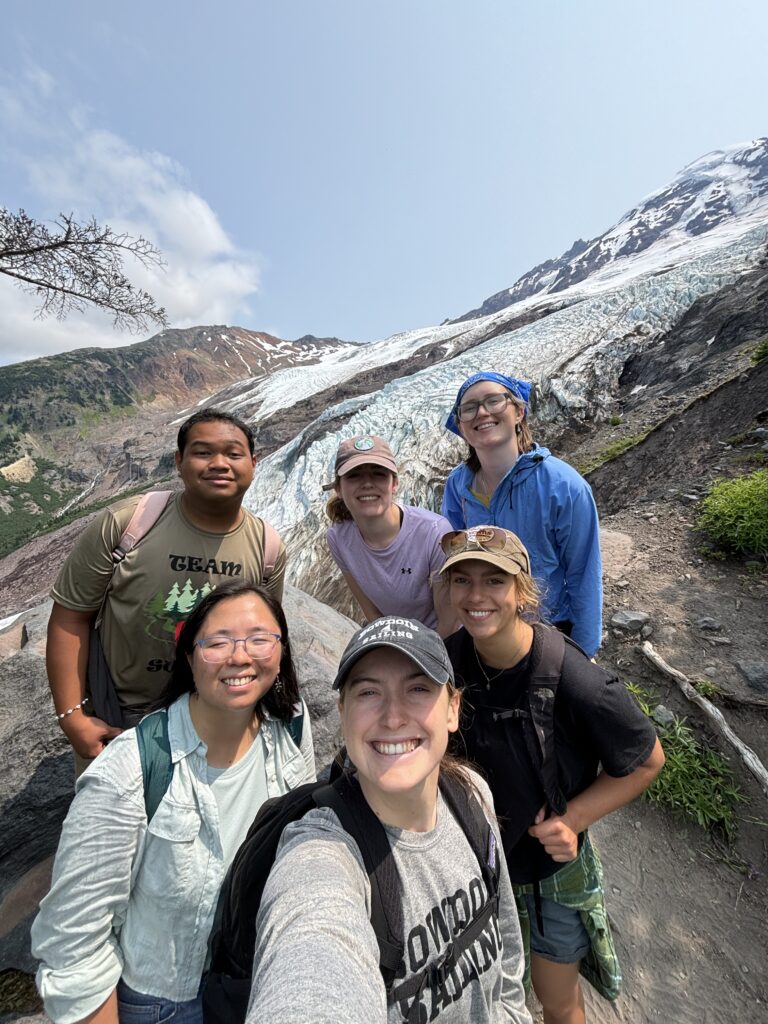
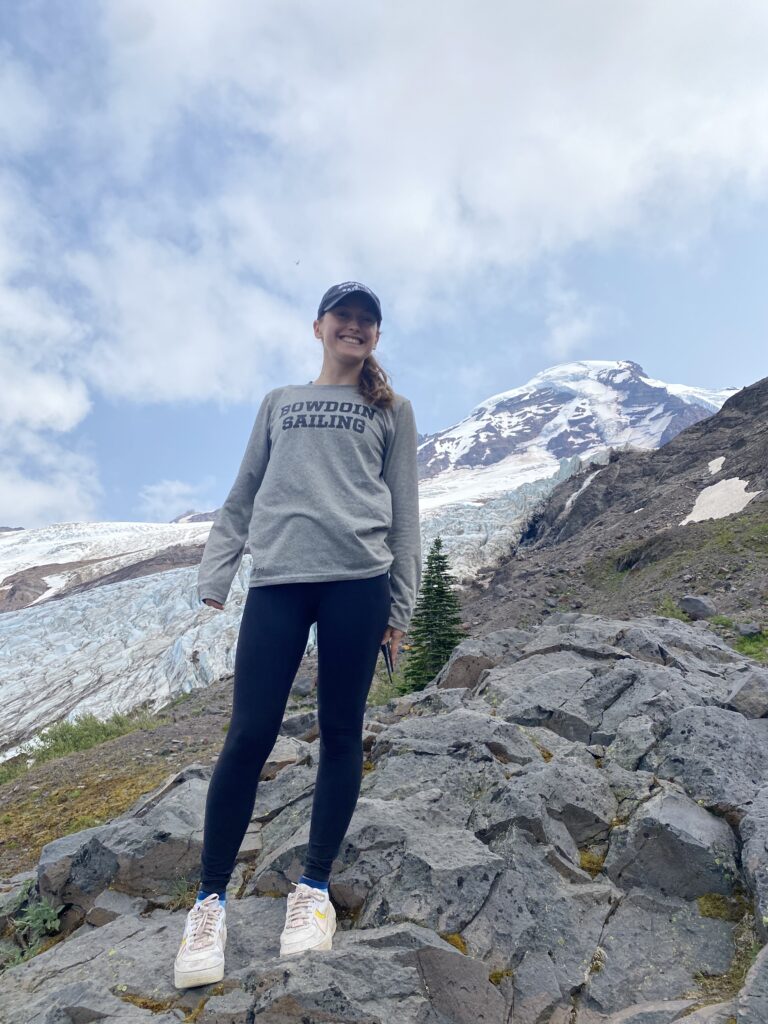
The REUs also have workshops and lectures every Monday which Ayden and I are gladly participating in as well! These include communications workshops, lab workshops, and snacks and tracks. My favorite workshops so far have been the image analysis and ROV (remotely operated vehicle) workshops. We identified sponges by on microscope analysis including Leucilla nuttingi and Aphrocallistes vastus. Later, electronic ROVs were built out of PVC including wire connections for the motors. Snacks and tracks are one hour lunch discussions in which SPMC faculty or local business people come to talk about their academic and work journeys within marine science. It has been a great place to ask questions about graduate school and finding work opportunities post-grad. Thank you so much to Brian Bingham, the Director of Marine and Coastal Science at SPMC, for organizing these informative sessions!
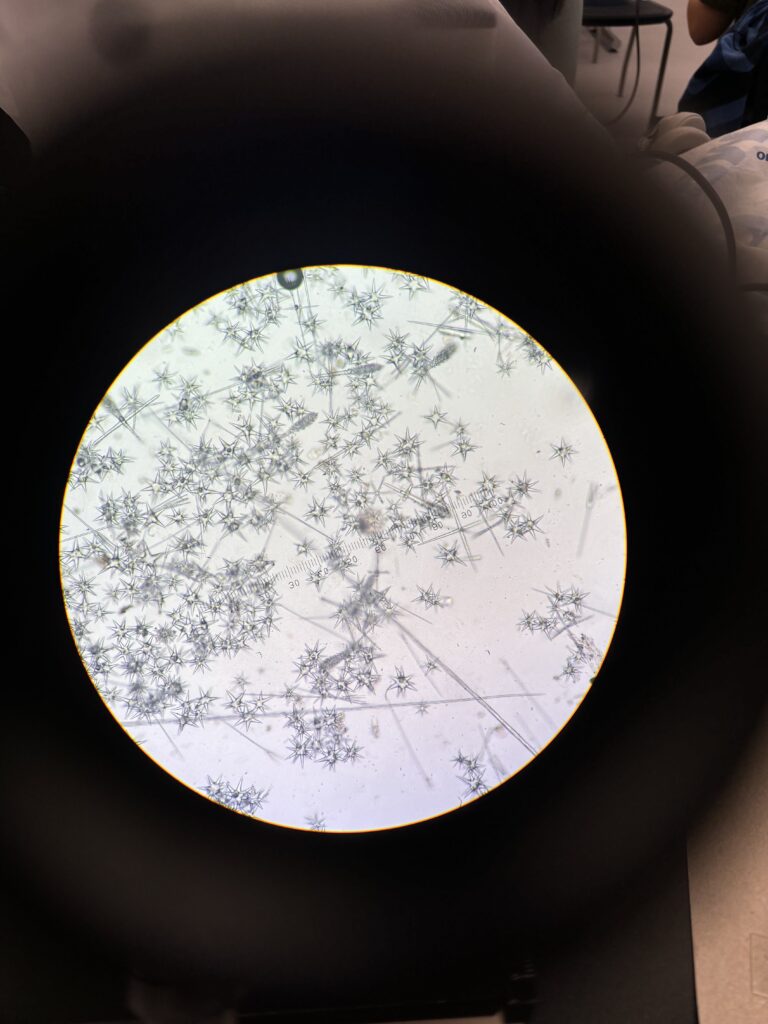
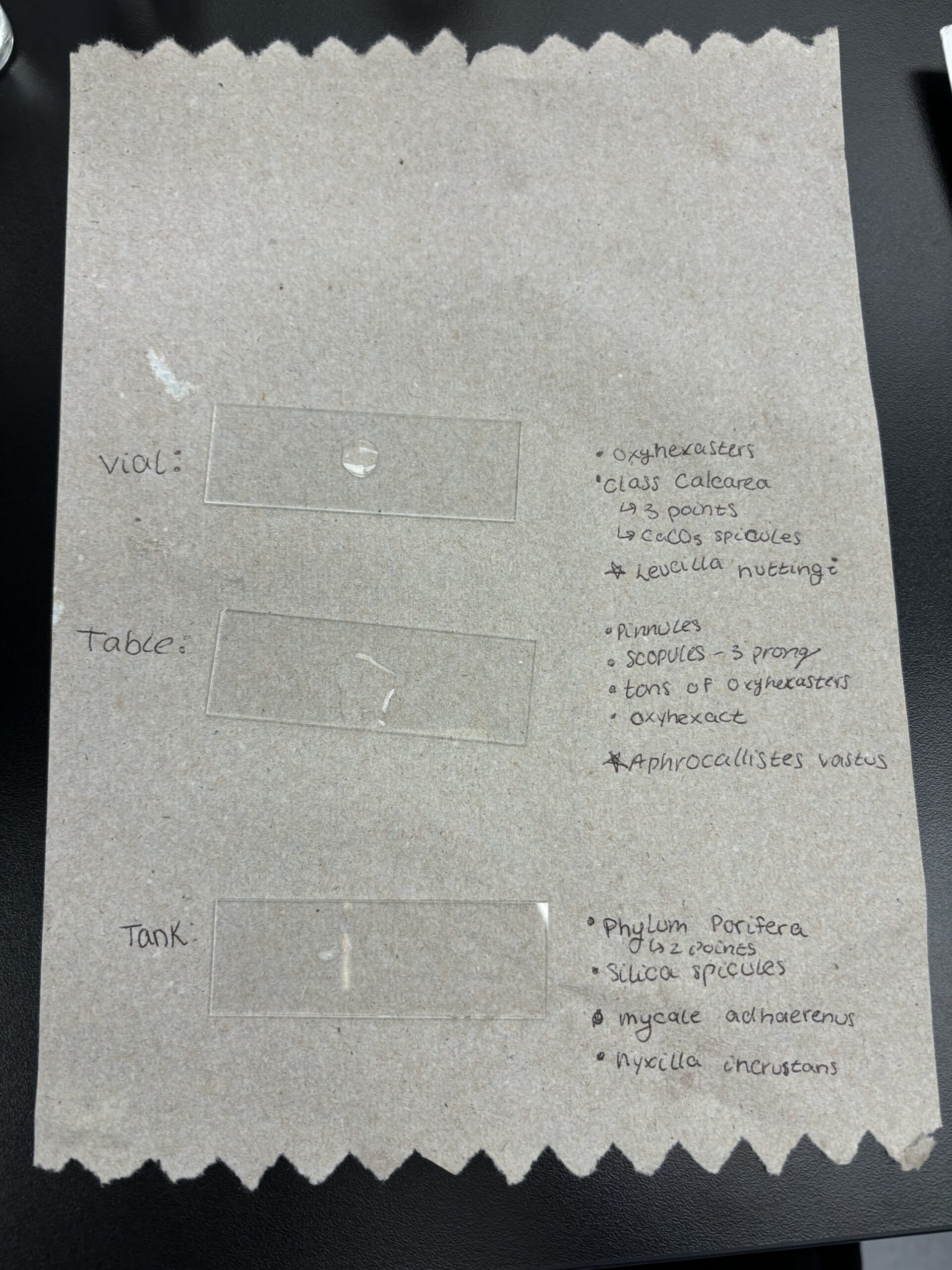
July 13th, 2024 – The REUs, Derek, Ayden, and I loaded the trailer with sea critters to take to a local park for “Kids R Best Fest”: an Anacortes event for families to learn about local businesses and enjoy a nice summers day. Our booth set up was for kids to get to experience and learn about marine life in a hands-on way. We spent a couple hours the day before preparing the animals and our outreach plan. The tanks were organized in terms of habitat or organism: rocky reef, intertidal, crabs, sea cucumbers, and sea stars. The children were primarily ages 3-12 and very interested in touching as many animals as possible. I would say the sea stars and urchins were the top hits! It was so cute to see the children’s faces light up as I placed each animal in their hands. Some of the older children, future marine scientists, even had thoughtful questions.
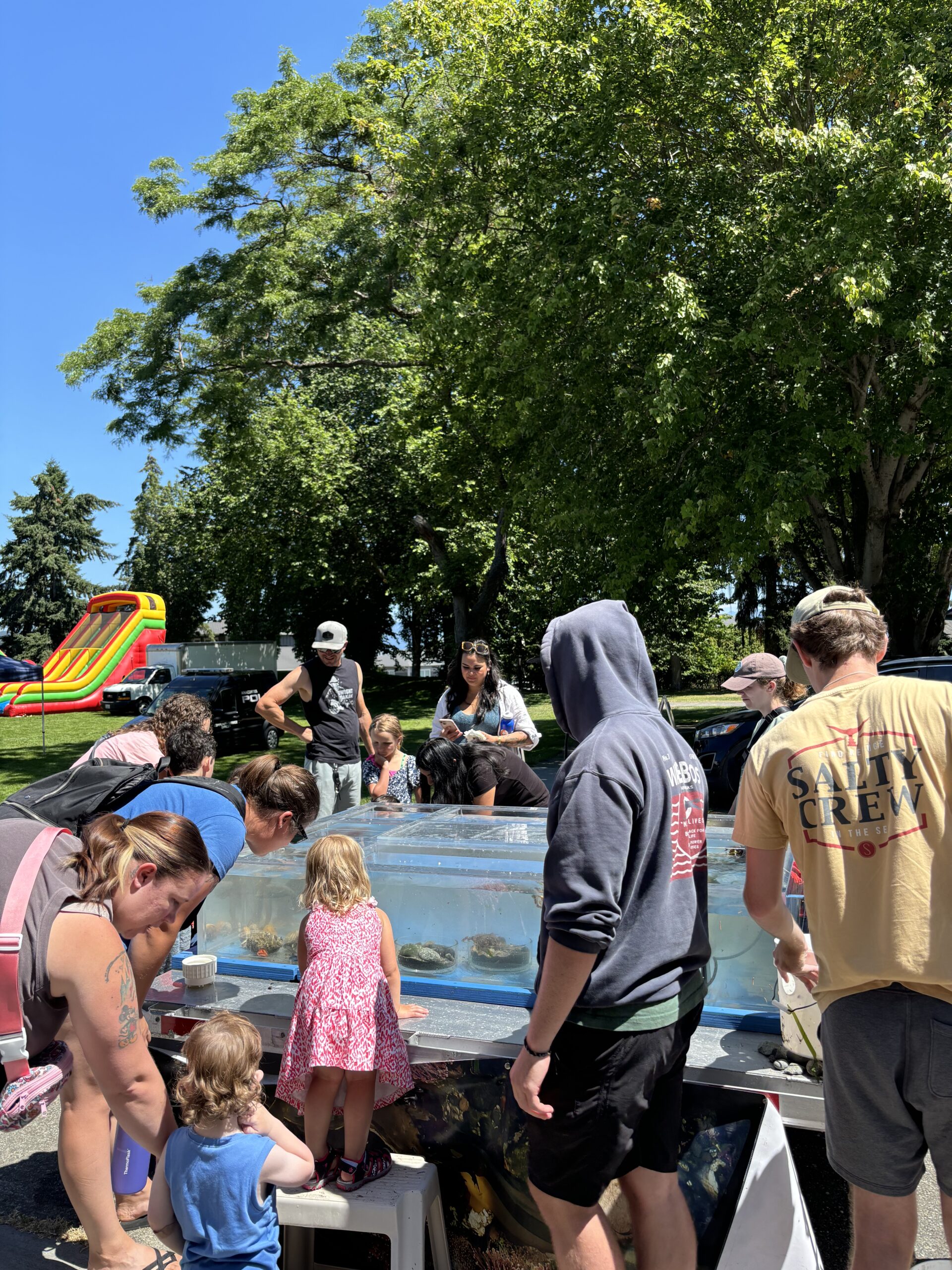
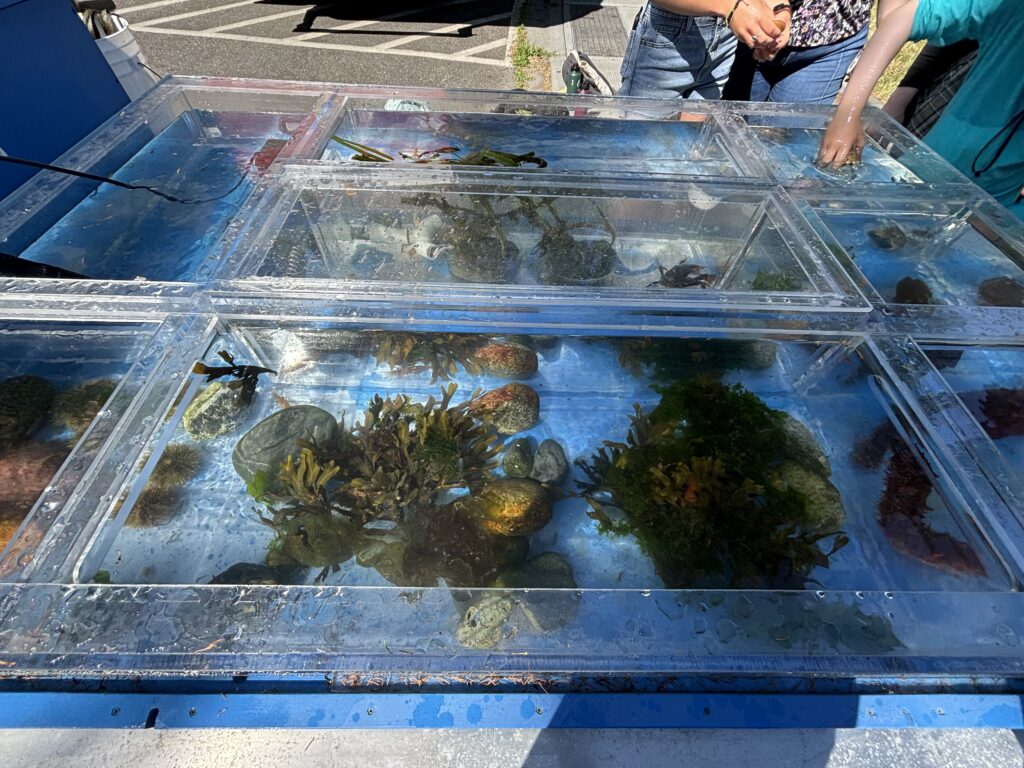
July 26th, 2024 – Jay Dimond (SPMC Research Assistant Professor) and Julie Barber (OWUSS NA Scholar in 1999) have also been very welcoming. They hosted Ayden, Angel (REU student), and I for a lovely homecooked meal. Julie made the most delicious salad I have ever had!

I have about 2 weeks left of my internship, and I am determined to make the most of it. I cannot believe how fast my time in WA is going! The Pacific Northwest is so beautiful!!

